People from all over the world comes to take pictures of this largest indoor jade plant in the world .
There are many people coming to visit my Largest Jade Plant and taking pictures….here are some of the people:

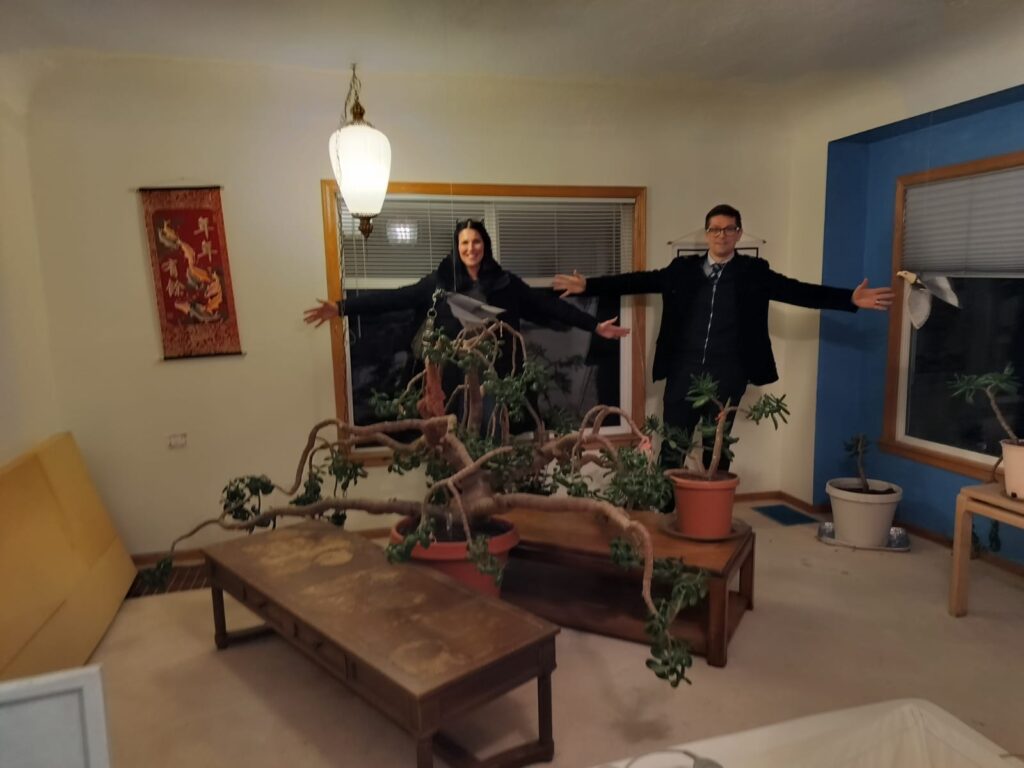
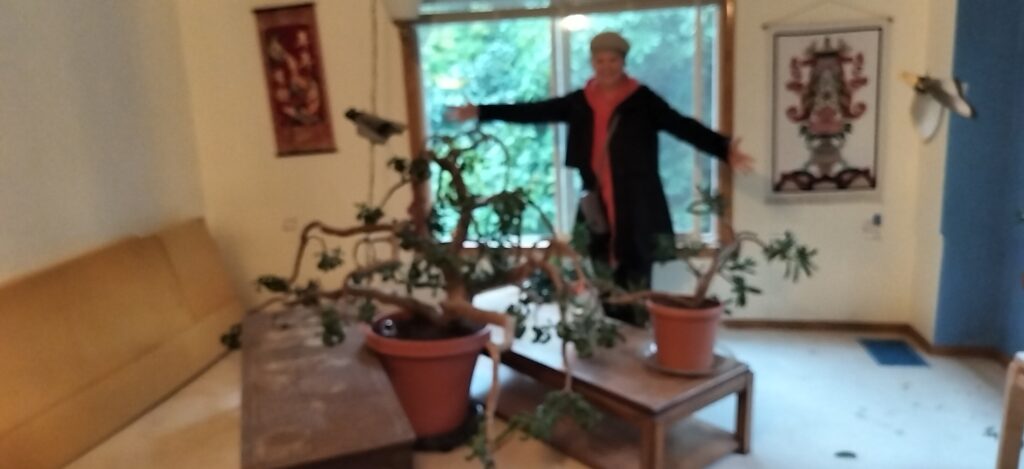
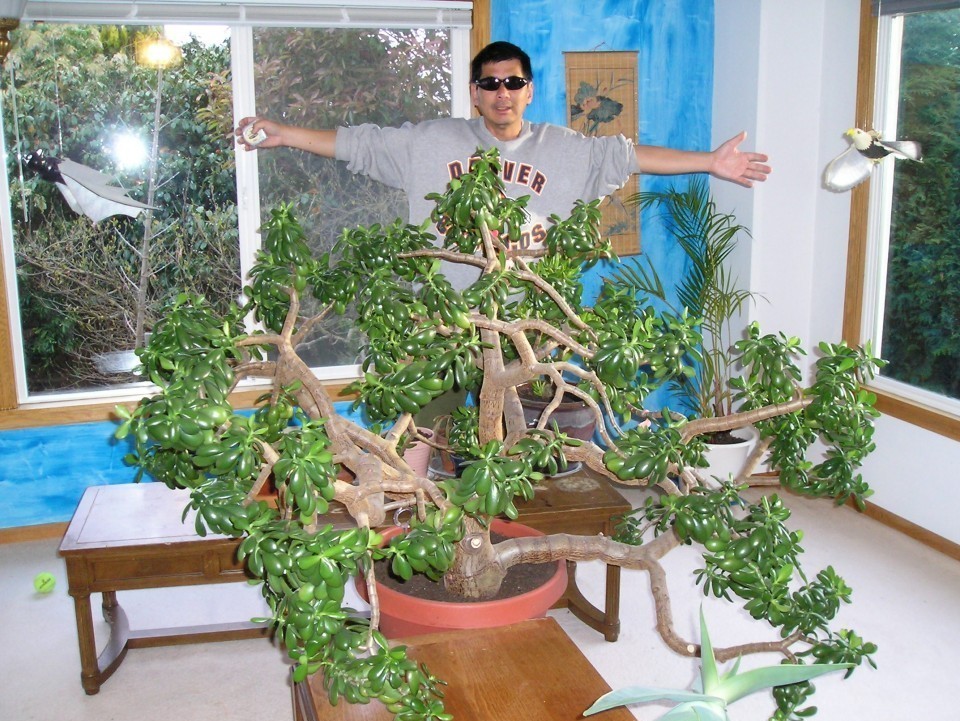
People from all over the world comes to take pictures of this largest indoor jade plant in the world .
There are many people coming to visit my Largest Jade Plant and taking pictures….here are some of the people:



Looking to invite luck, harmony, and style into your living space? Jade plants are popular indoor plants believed to attract positive energy and prosperity. Known for their glossy leaves and easy care, these succulents hold a special place in Feng Shui, where they symbolise wealth, protection, and emotional balance.<!– –> Their ability to thrive in various lighting conditions and purify the air adds both visual appeal and wellness benefits to any room. They’re also ideal for Vastu-aligned homes, indoor air purification, and minimalist decor themes, making them one of the best low-maintenance plants for positive energy. Each variety adds its own visual charm and calming presence, making them ideal for homes, offices, or personal corners. Whether your goal is to create a more peaceful environment or simply enhance your interiors, these 10 luck-attracting jade plant varieties offer a natural way to bring positivity into your home
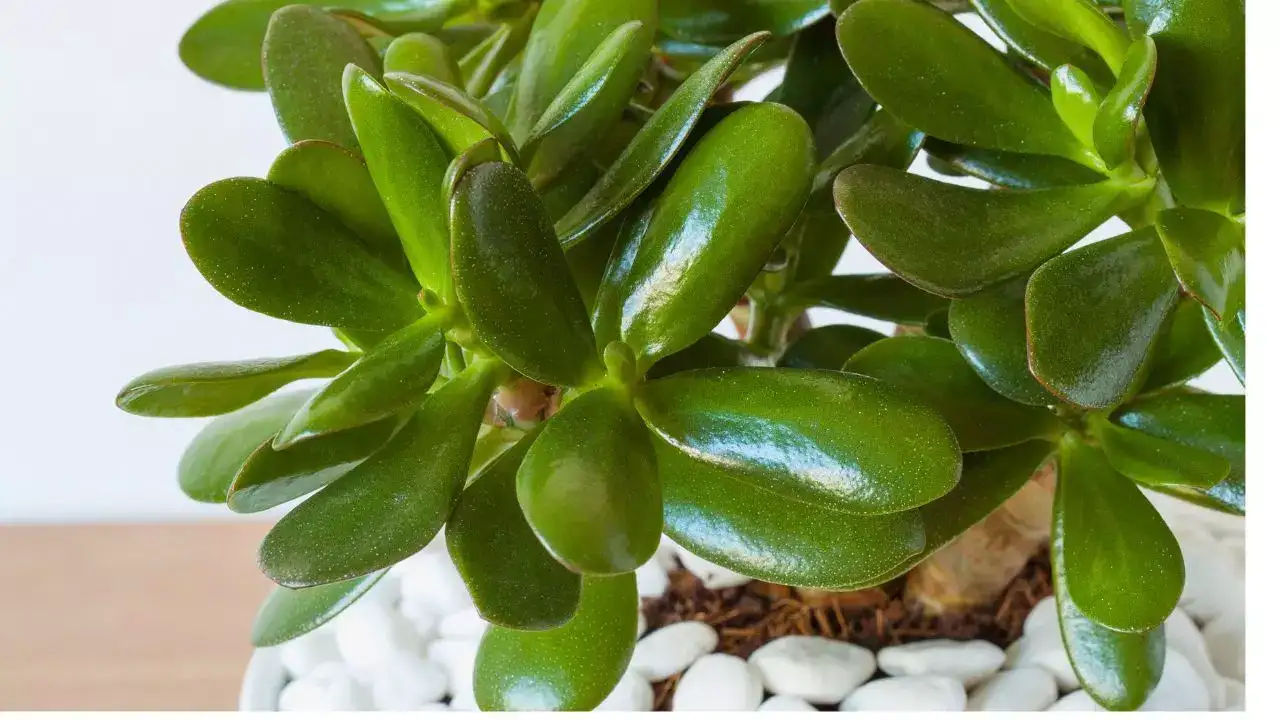
The classic jade plant is one of the most loved indoor succulents, featuring plump, oval-shaped green leaves and a woody stem that gives it a bonsai-like appearance. Traditionally seen as a symbol of good luck and wealth, this plant is often placed near the front door or in a workspace to attract financial energy.
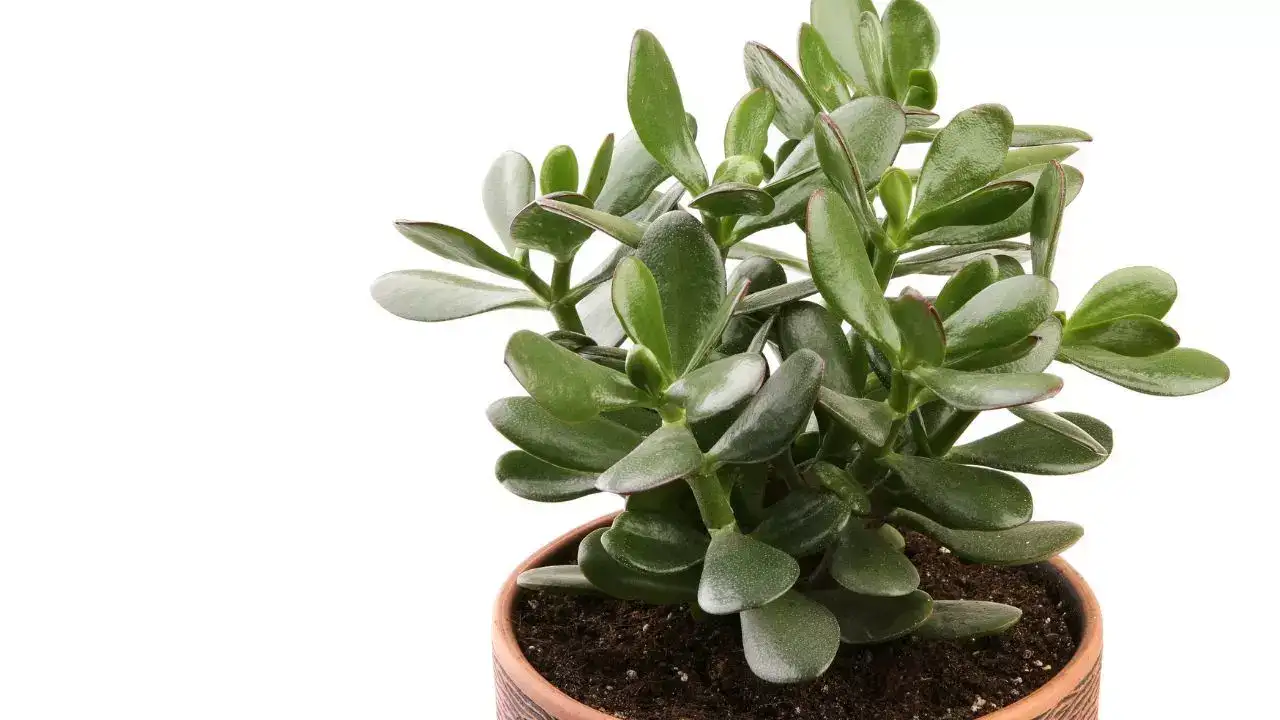
This stunning variety gets its name from its warm golden-yellow and red-tinged foliage, which glows even brighter under sunlight. ‘Hummel’s Sunset’ adds not only a splash of colour to your space but also a calming presence. In Feng Shui, it represents balance and inner harmony, making it perfect for rooms where you want to create a peaceful and soothing atmosphere.
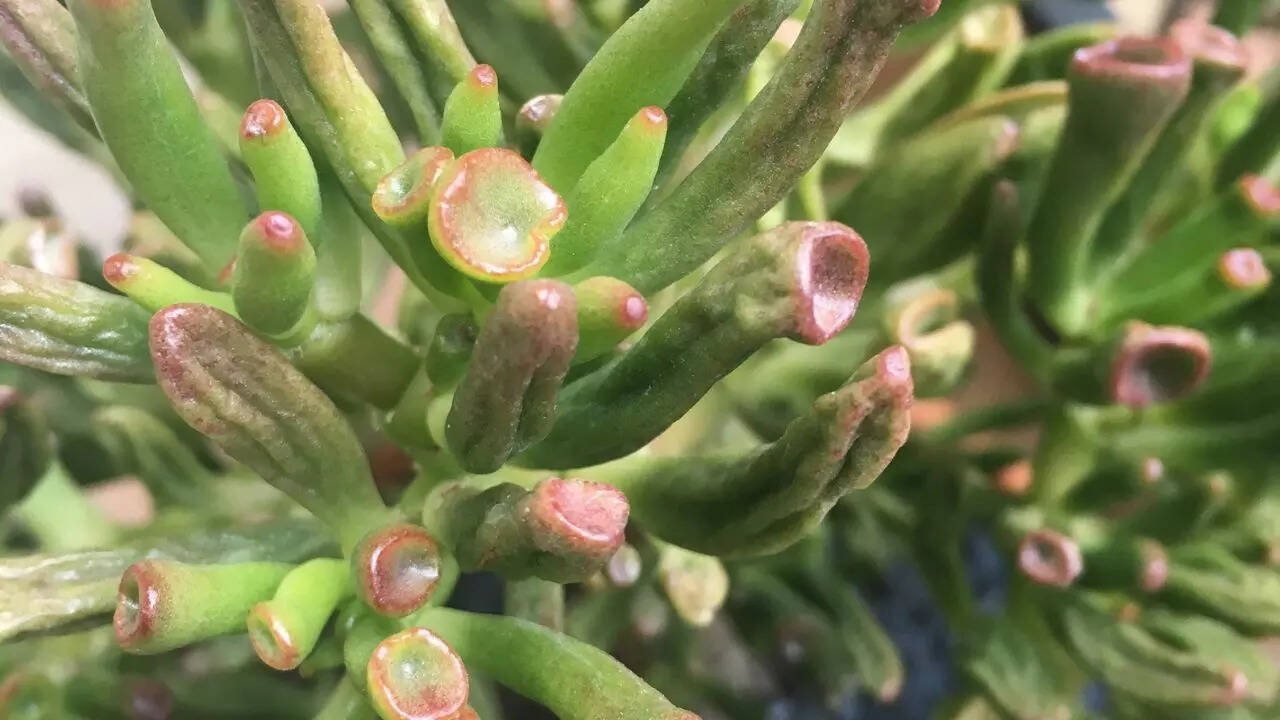
With its unusual, trumpet-shaped leaves that resemble small green fingers, the ‘Gollum’ jade plant stands out as a quirky addition to any home. It is believed to deflect negative energy and attract positive vibes. Because of its compact form, it fits well on desks, bookshelves, or windowsills. It’s also drought-tolerant and easy to care for, great for busy households.
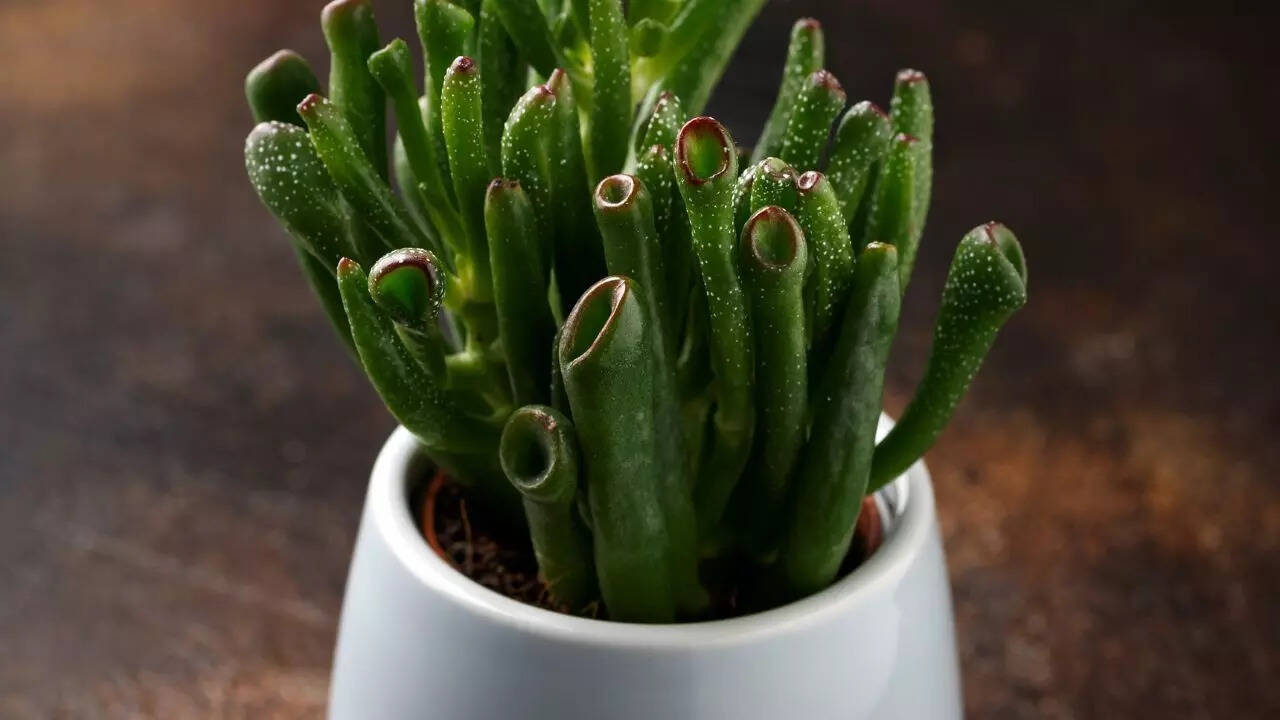
This variety is very similar to ‘Gollum’ but has leaves that curl inward at the tips, giving it a whimsical, almost magical look. The ‘Hobbit’ jade plant is thought to encourage happiness and joy, especially when placed near windows or entryways. Its small size and charming appearance make it a popular choice for adding character to living rooms, kitchens, and even children’s bedrooms.
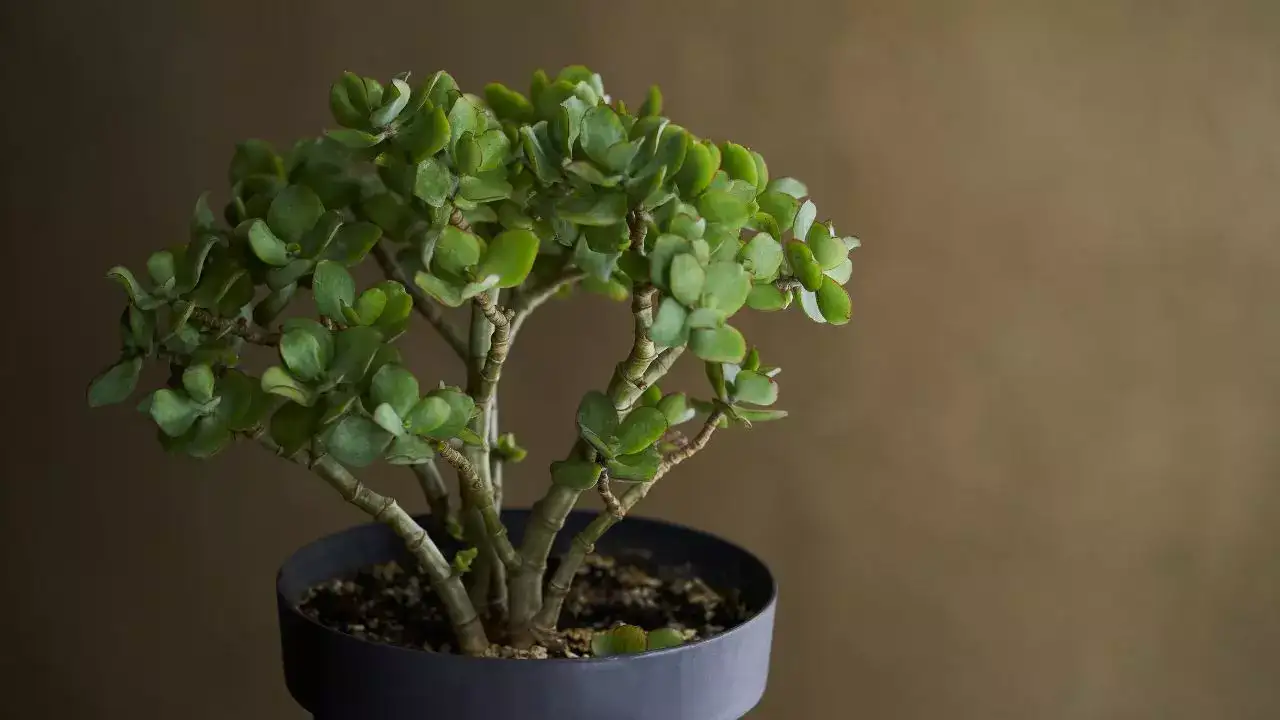
The ‘Tricolor’ jade plant features variegated leaves with shades of green, cream, and subtle pink, making it a visual delight. This plant symbolises emotional balance and peaceful relationships, and is ideal for areas where you want to encourage harmony and clear communication. Its colorful foliage brings a refreshing pop to both modern and rustic interiors.
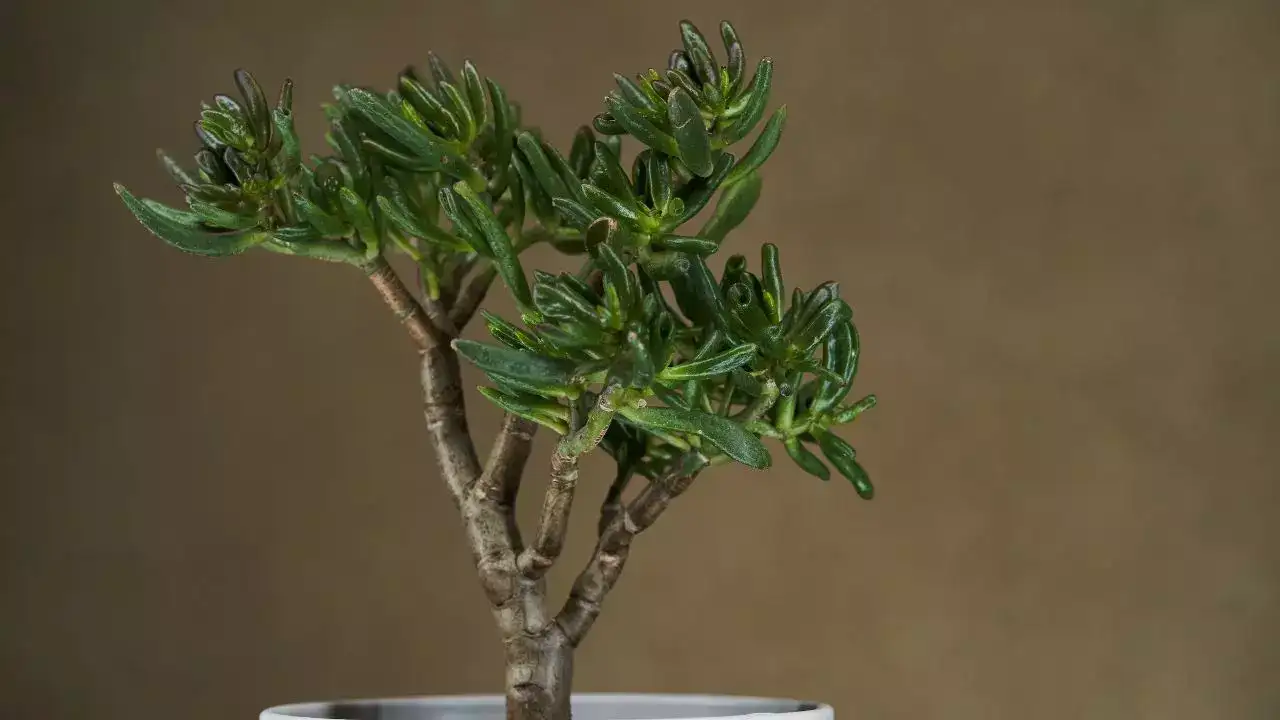
This bold variety features tubular green leaves tipped with deep red, giving it a sculptural and striking appearance. The ‘Red Horn Tree’ is believed to enhance protective energy and inspire strength and motivation. It works well in home offices, studios, or any space where you need a boost of confidence and creativity.
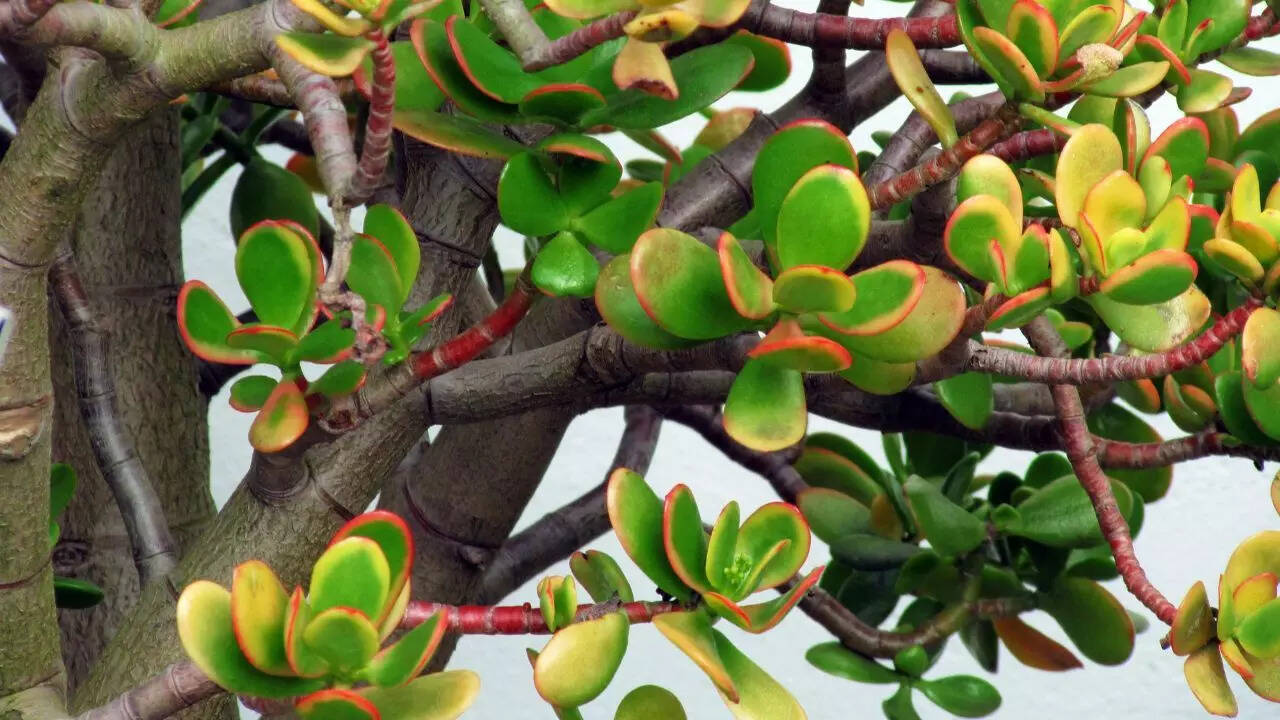
A miniature jade plant with small, bright green leaves, ‘Minima’ is fast-growing and perfect for windowsills, terrariums, or small decorative pots. It’s often linked with personal growth and renewal, making it a thoughtful plant for transitional spaces like entryways or dorm rooms. Despite its small stature, it offers a powerful lift in energy and mood.
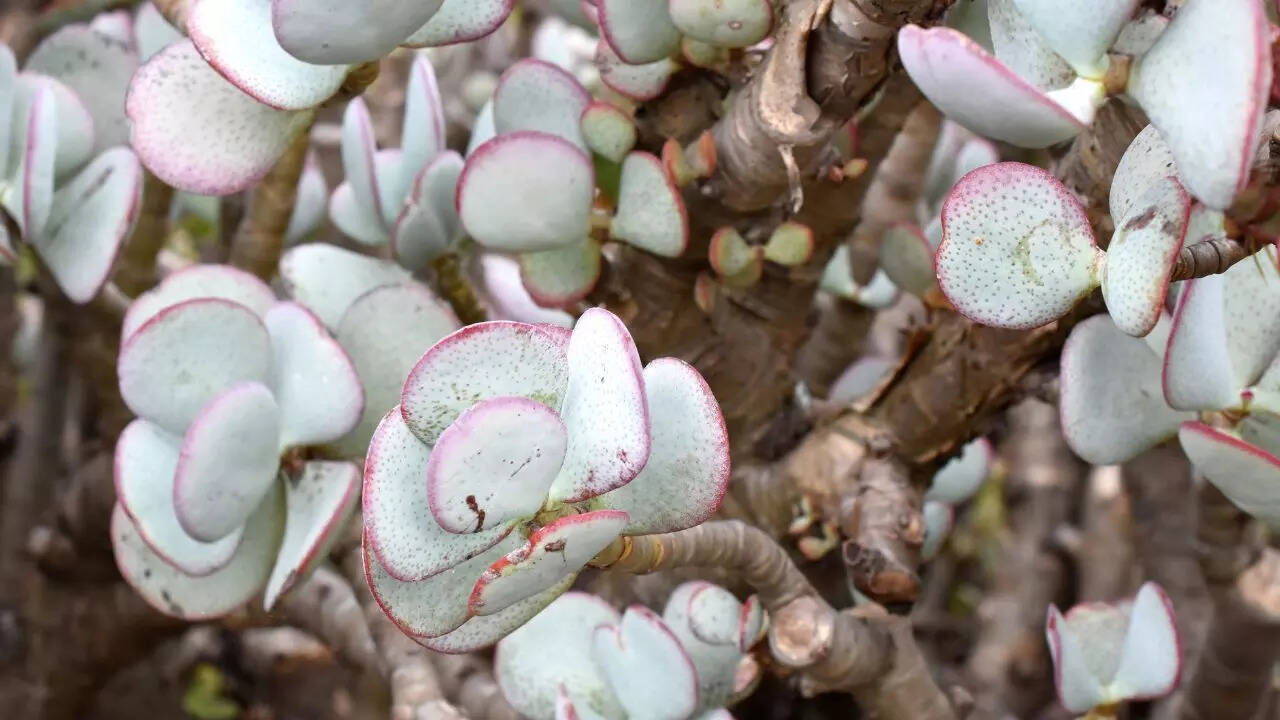
Known for its round, silvery-blue leaves edged with red, the Silver Dollar Jade has a cooling, calming look. It’s often associated with wisdom, clarity of thought, and emotional stability. Place it in a quiet corner, a home office, or a study to encourage focus and inner peace. Like other jade plants, it needs very little watering and adapts well to indoor conditions.
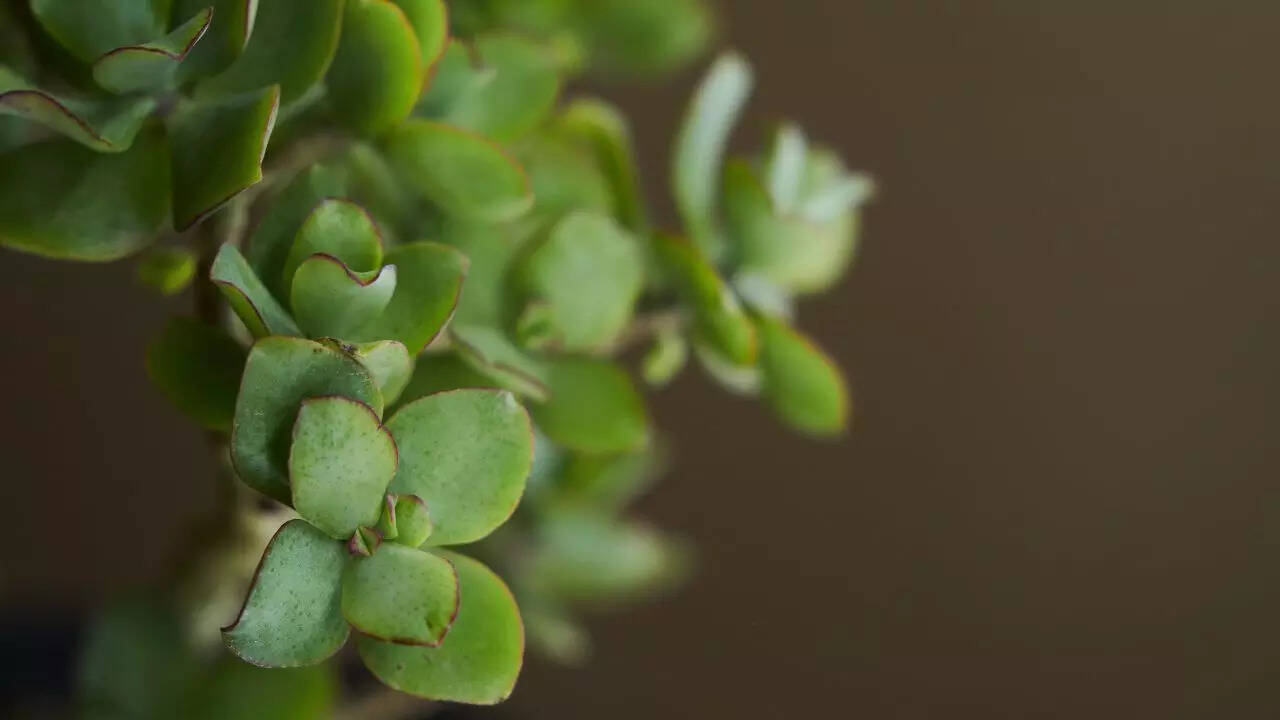
A dwarf version of the classic jade, ‘Crosby’s Compact’ has smaller, tightly packed leaves and a bushier appearance. It’s an excellent choice for compact living spaces, bedside tables, or small work desks. Despite its size, it radiates peaceful and grounding energy. Its structured form also brings a neat and tidy look to any room.
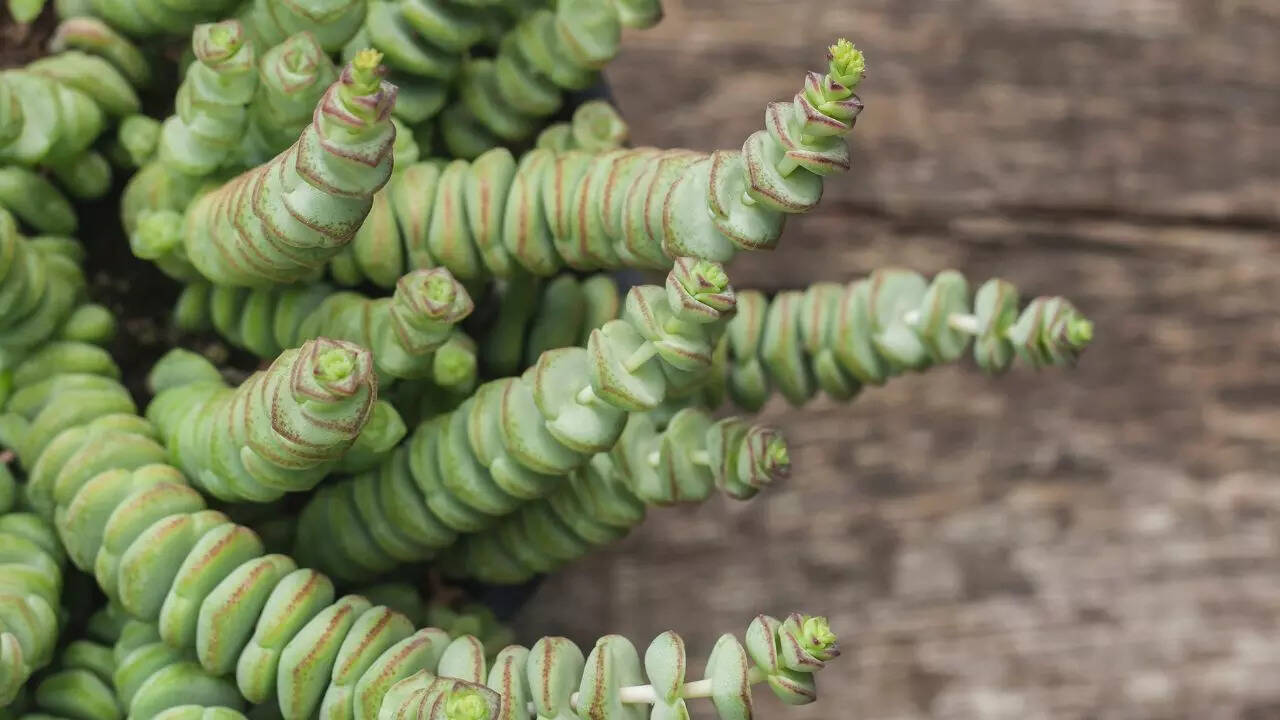
Unlike the traditional upright jades, the String of Buttons has a trailing habit and features stacked, coin-like leaves with pink edges. It adds a touch of playfulness to any setting and is believed to promote happiness and creativity. This variety is best suited for hanging baskets, elevated planters, or shelves where its cascading form can be appreciated.Jade plants are more than just decorative succulents, they’re living symbols of prosperity, protection, and peace. With so many unique varieties to choose from, you can easily find one that suits your style, space, and energy needs. Whether you’re enhancing your home décor or cultivating a more positive atmosphere, these jade plants are a natural and nurturing addition to any room.
How to Make Your Indoor Jade Plant Bloom: A Complete Guide for Houseplant Enthusiasts
Jade plants (Crassula ovata) are among the most beloved indoor plants across the globe. With their thick, glossy leaves and tree-like structure, they add a touch of elegance to any home or office. Known for their resilience and easy-care nature, these houseplants often become heirlooms, passed down through generations. But while jade plants are well-known for their lush green foliage, did you know they can also flower indoors?
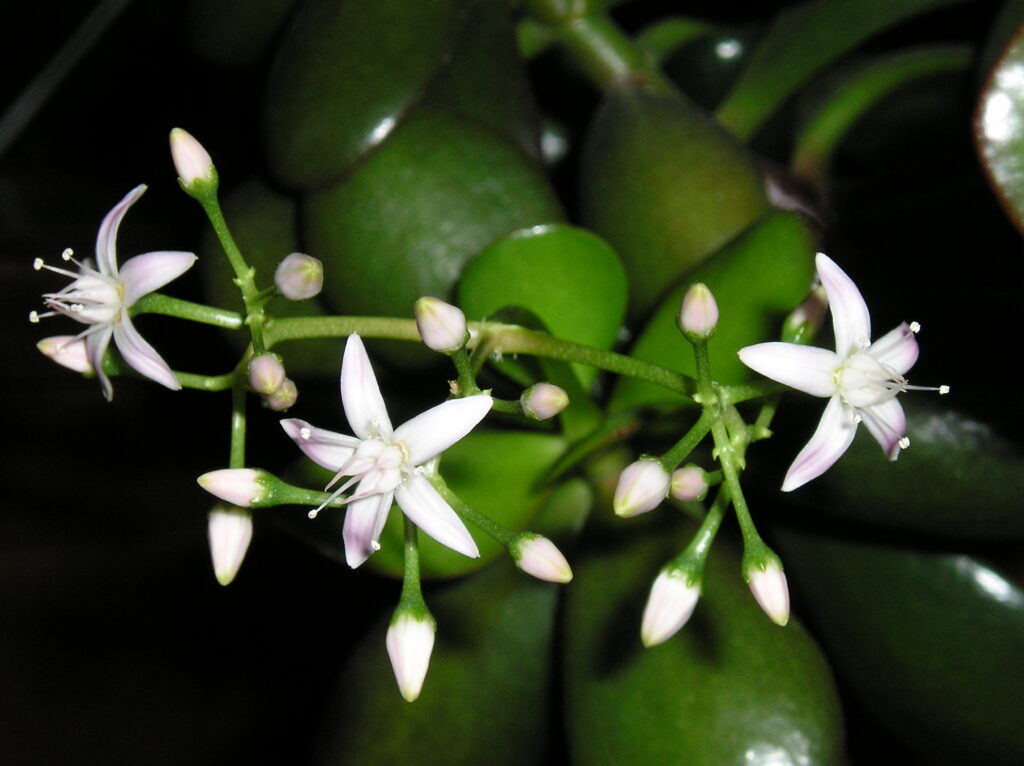
Yes, that’s right. Under the right conditions, your indoor jade plant can reward you with delicate, star-shaped white or pink blossoms. While achieving blooms indoors is a rare feat, it’s certainly possible—and incredibly satisfying. If you’re an indoor gardening enthusiast or someone looking to purchase a flowering succulent, this blog post is for you.
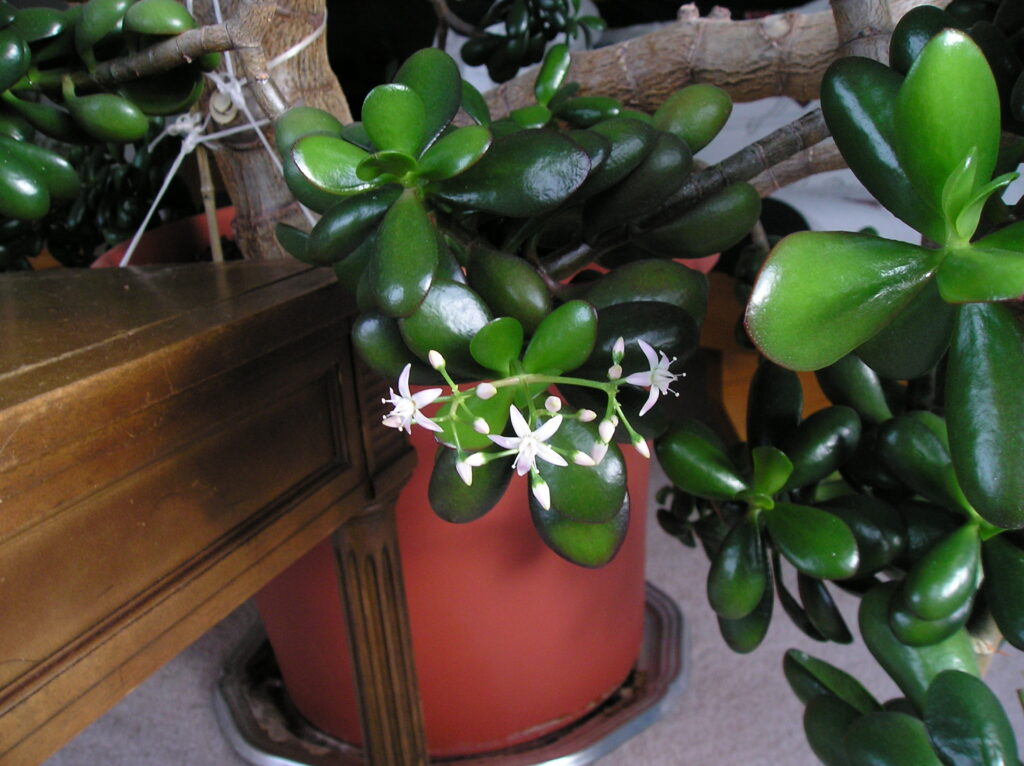
In this ultimate guide, we’ll explore how to encourage jade plants to bloom indoors. You’ll learn the specific requirements in terms of light, temperature, watering, stress conditions, and more. Whether you’re a novice plant parent or an experienced succulent collector, this comprehensive post will help you take your jade plant care to the next level.
The biggest misconception about jade plants is that they’re simply non-flowering houseplants. This isn’t true. Jade plants do flower, but only when certain environmental cues are met. These include:
Indoor environments often lack some or all of these elements, which is why jade plants bloom more readily outdoors. However, with careful adjustments and patience, indoor blooms are possible.
Jade plant blooms are a true reward. Here’s what to expect:
They form in clusters, creating a cloud of delicate beauty—like a celebration of your plant parenting skills.
Choosing the right spot in your home can make a huge difference in whether your jade plant (Crassula ovata) simply survives—or actually thrives and blooms. Since jade plants require a combination of bright, direct sunlight, cool nighttime temperatures, and airflow, some areas of your home are better suited than others.
Here’s a closer look at ideal indoor locations to position your jade plant for the best chances of flowering:
This is typically the best location in most homes for growing flowering indoor succulents like jade plants.
Pros:
Cons:
Tip: During the summer months, pull the plant back slightly or use sheer curtains to diffuse harsh midday rays.
SEO Keywords Used: best window for houseplants, south-facing window jade plant, indoor sun exposure for succulents
An enclosed porch or sunroom is another excellent location for jade plants, especially for larger specimens that benefit from space and airflow.
Pros:
Cons:
Tip: During fall, allow the nighttime temperature to drop slightly in this room to replicate the seasonal shift that encourages flowering.
SEO Keywords Used: jade plant sunroom location, succulent care in enclosed porch, houseplant light and temperature balance
You might not think of it, but an unused guest room with a good window setup can offer the perfect quiet zone for a jade plant to bloom.
Pros:
Cons:
Tip: Use full-spectrum LED grow lights and a digital thermometer to monitor light and temperature easily from your phone.

To make a jade plant bloom indoors, you need to replicate its natural blooming conditions found in its native habitat—South Africa. There, jade plants experience hot, dry summers and cooler, drier winters. This fluctuation in environmental conditions plays a major role in their flowering cycle.
Typically, jade plants bloom in late winter to early spring, following a rest period during fall. This rest period is critical—it signals to the plant that it’s time to shift from vegetative growth to reproduction (i.e., flowering).
Jade plants need to be at least 3 to 4 years old before they are capable of blooming. Even then, flowering is not guaranteed. Maturity indicators include:
If your plant is still young or recently propagated, focus on nurturing strong roots and structure first.
Jade plants are sun-lovers. To flower, they require 8 to 12 hours of direct sunlight per day. Indoors, this can be difficult to achieve naturally, so consider:
Signs your jade is receiving enough light include:
Overwatering is the biggest jade plant killer—and also a flowering inhibitor. During the fall and winter months:
Tip: A mildly stressed plant is more likely to flower. Controlled water stress mimics seasonal drought and can stimulate blooming.
Cool nights are essential for bloom initiation. Aim for 50°F to 60°F (10°C to 15°C) during the rest period (typically fall and early winter).
To achieve this indoors:
The 10-degree difference between day and night is a strong cue for flower bud formation.
Stress from being slightly rootbound can promote blooming, but this needs to be managed carefully.
Avoid repotting right before or during the rest period, as it can interrupt the blooming process.
Though jade plants don’t go dormant like deciduous trees, they need a rest period from active growth. This rest period:
Don’t fertilize during this time. Resume light watering and feeding once buds appear or as spring approaches.
Even if you follow every tip perfectly, your jade plant might still not bloom. That’s normal. Blooming is a complex response influenced by genetics, environment, and overall plant health.
Focus on maintaining optimal care, and treat blooming as a bonus. Remember: a healthy jade plant is a beautiful houseplant even without flowers.
When a jade plant finally blooms indoors, you’ll be treated to clusters of small, star-shaped flowers. They are typically:
Blooms usually last for a few weeks and then fade. You can trim off spent flowers to encourage new growth in spring.
| Mistake | Why It’s a Problem |
| Overwatering | Leads to root rot and prevents flower formation |
| Inconsistent light | Interrupts the blooming cycle |
| Skipping rest period | Prevents the environmental signal needed for blooming |
| Using non-draining soil | Causes water retention, root stress, and poor overall health |
| Expecting young plants to bloom | Younger jade plants are focused on growth, not reproduction |
For houseplant lovers, achieving indoor flowering in jade plants is not just about aesthetics—it’s a symbol of successful, attentive care. It’s also a strong selling point for succulent retailers and nursery businesses looking to appeal to knowledgeable plant parents.
Whether you’re nurturing your own plant or selling jade plants online, understanding and promoting indoor blooming adds a transactional benefit: plants grown with the potential to bloom may fetch higher prices and satisfy more dedicated buyers.
Growing jade plants indoors is already rewarding, thanks to their sculptural form and easygoing nature. But getting your jade plant to bloom? That’s next-level houseplant mastery.
To recap, indoor jade plant flowering is possible when you combine:
Maturity
Long hours of direct light
Cool nights
Reduced watering
A dedicated rest period
So, if you’ve got a mature jade plant basking in your sunniest window, don’t give up on those tiny blossoms just yet. With the right care, timing, and a bit of patience, you may just wake up one winter morning to find your jade plant has surprised you—with flowers.
1: Can jade plants bloom indoors?
Yes, but it’s rare. They need intense light, cooler nights, a dry rest period, and maturity.
2: How old must a jade plant be before it blooms?
Usually at least 3–4 years old. Some may take longer depending on conditions.
3: Do I need grow lights to make my jade plant flower indoors?
If natural light is insufficient, especially in winter, grow lights can be very helpful.
4: What does a jade plant flower look like?
Small, star-shaped, white or pale pink flowers appearing in clusters at branch tips.
5: How often do jade plants bloom indoors?
If conditions are perfect, they may bloom annually in late winter or early spring.
I sleep under the Jade Plant…so cool and meditative
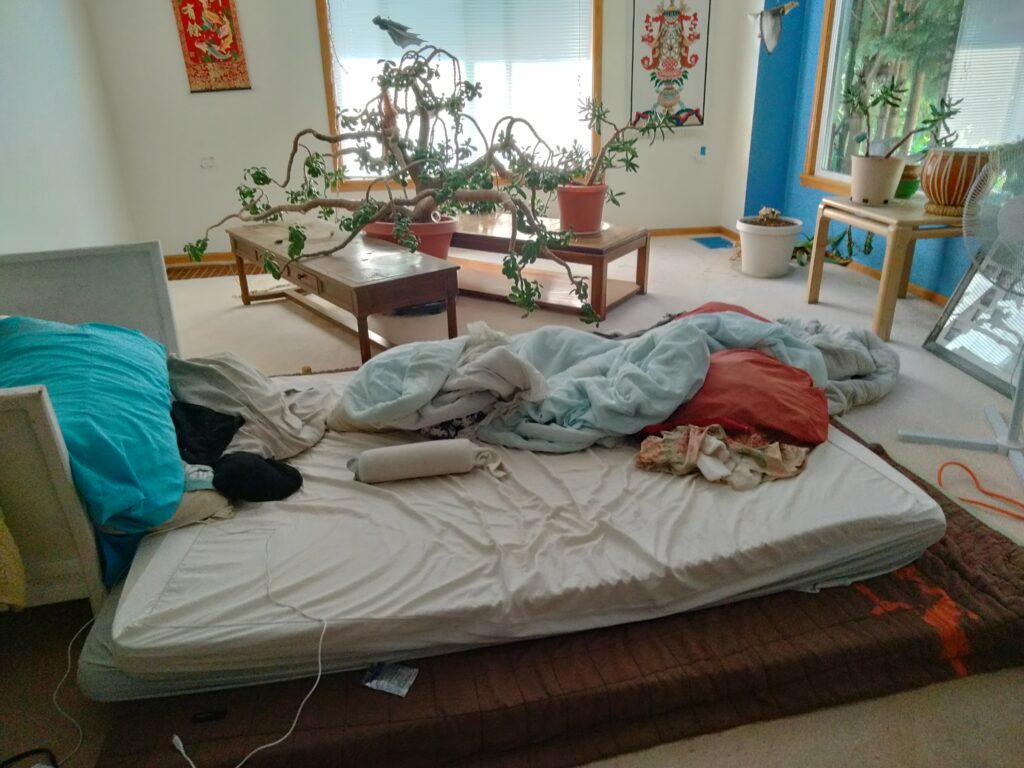
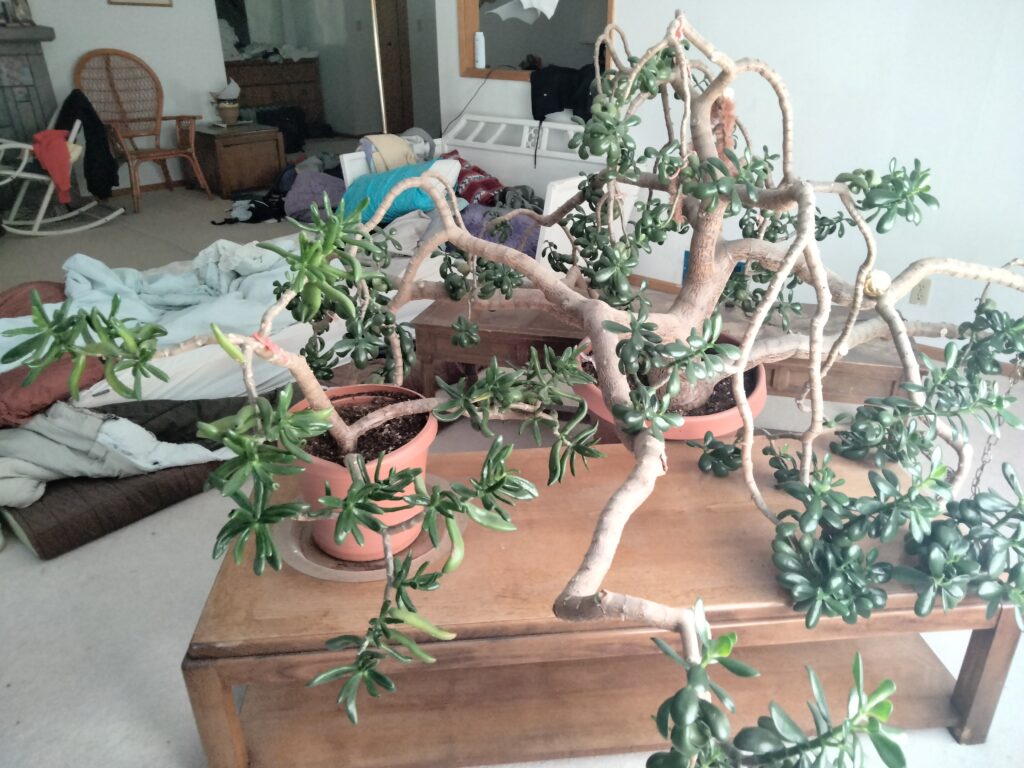
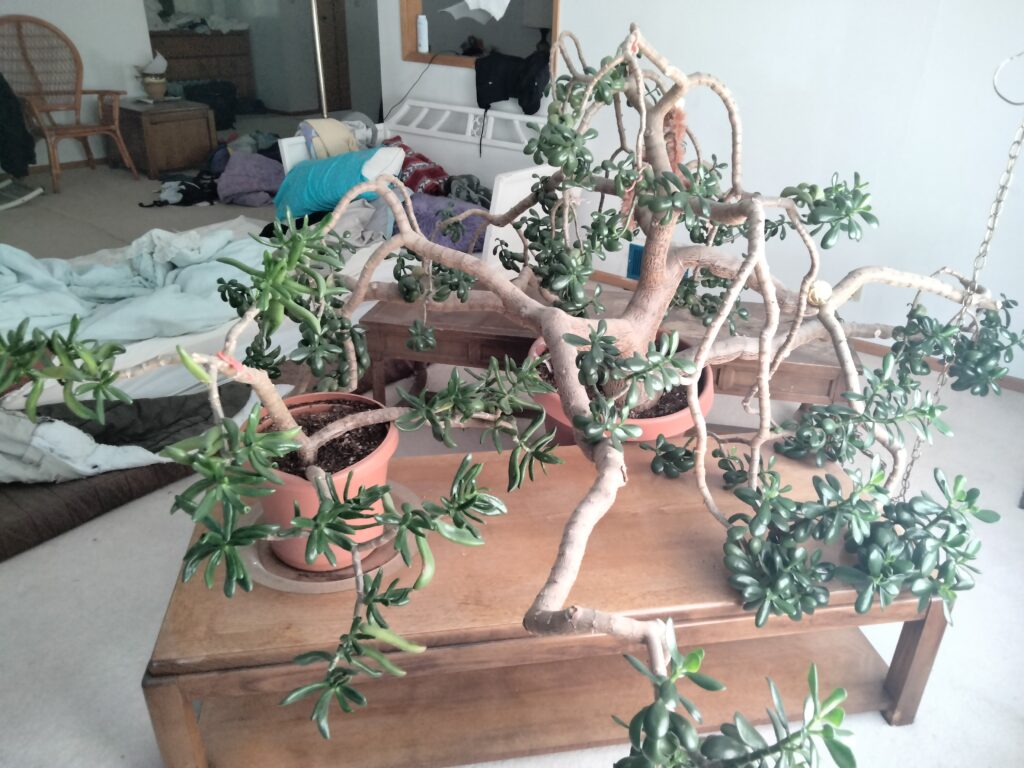
Jade plants, also known as Crassula ovata, are popular houseplants that are native to South Africa. They are known for their thick, glossy leaves and their ability to tolerate a wide range of growing conditions. Jade plants are easy to care for and can thrive in many different environments, making them a great choice for people who are new to gardening or who don’t have a lot of experience with houseplants.
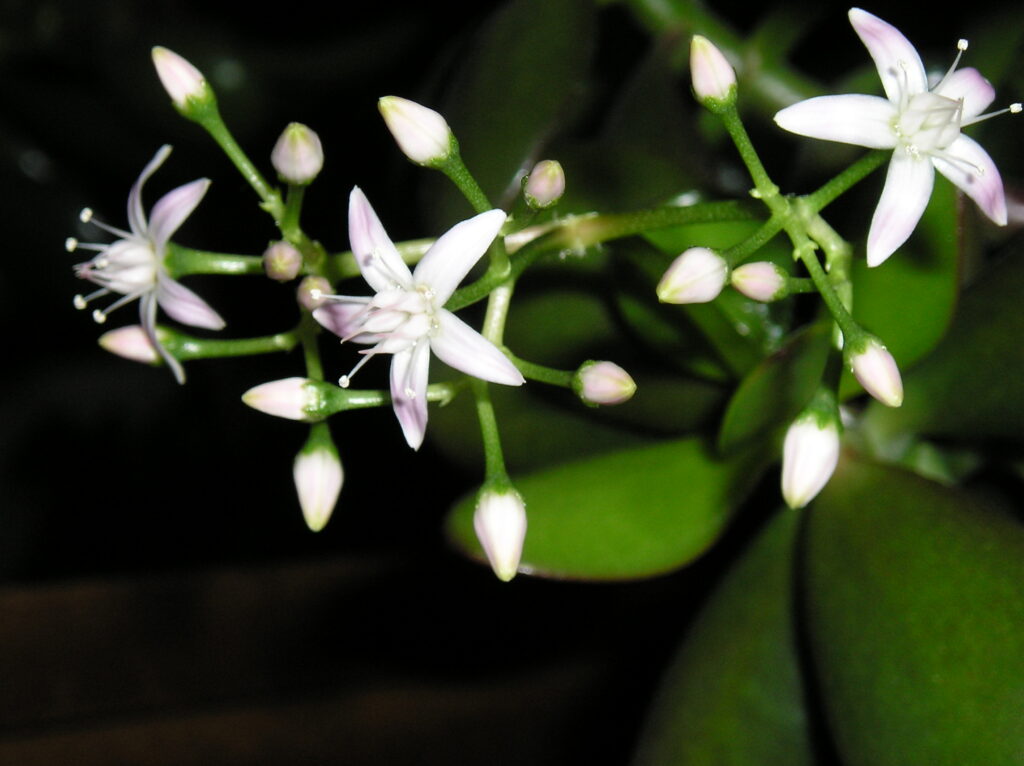

To care for a jade plant, place it in a location with bright, indirect light and water it regularly, allowing the soil to dry out slightly between waterings. It is also important to fertilize your jade plant every few months to provide it with the nutrients it needs to grow. In addition to these basic care tips, it is also important to keep your jade plant free of pests and to prune it regularly to encourage healthy growth.
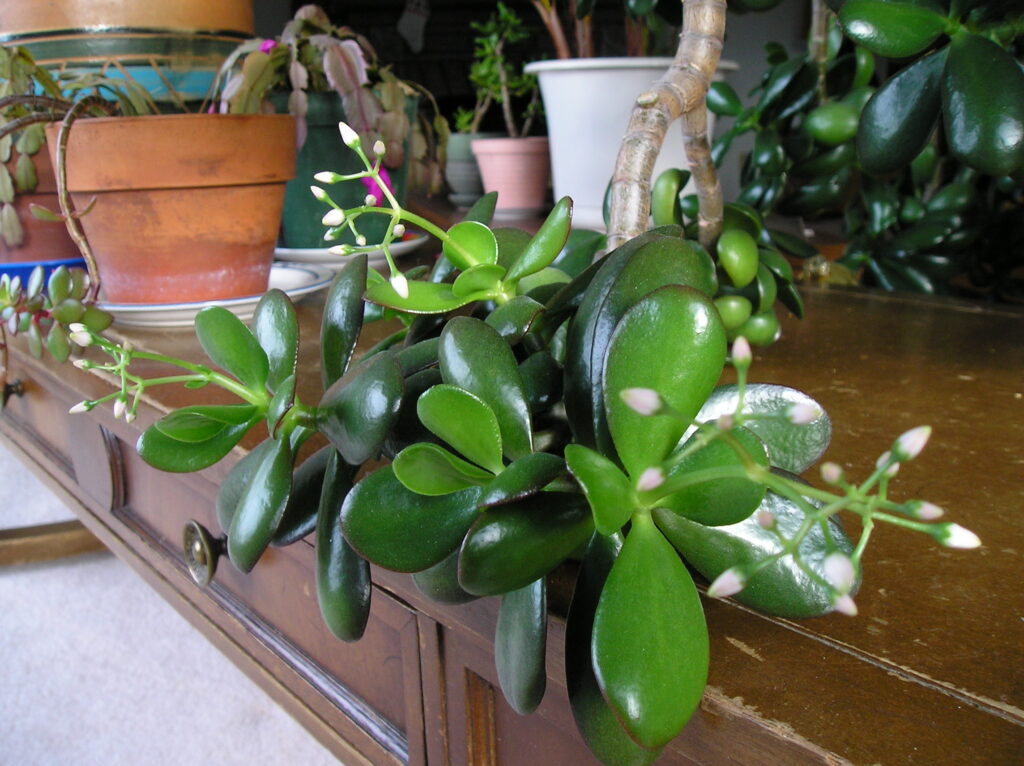

Jade plants, also known as Crassula ovata, are a type of succulent plant that is native to South Africa. They are popular houseplants because of their low maintenance and ability to thrive in a variety of lighting conditions. Jade plants have thick, fleshy leaves and stems that store water, which allows them to survive prolonged periods without water. They are typically grown in well-draining soil and prefer indirect sunlight or bright, indirect light. They can be prone to pests such as mealybugs and aphids, and it’s important to carefully monitor their watering to prevent over-watering or under-watering. With proper care, jade plants can live for many years and grow into large, lush plants.
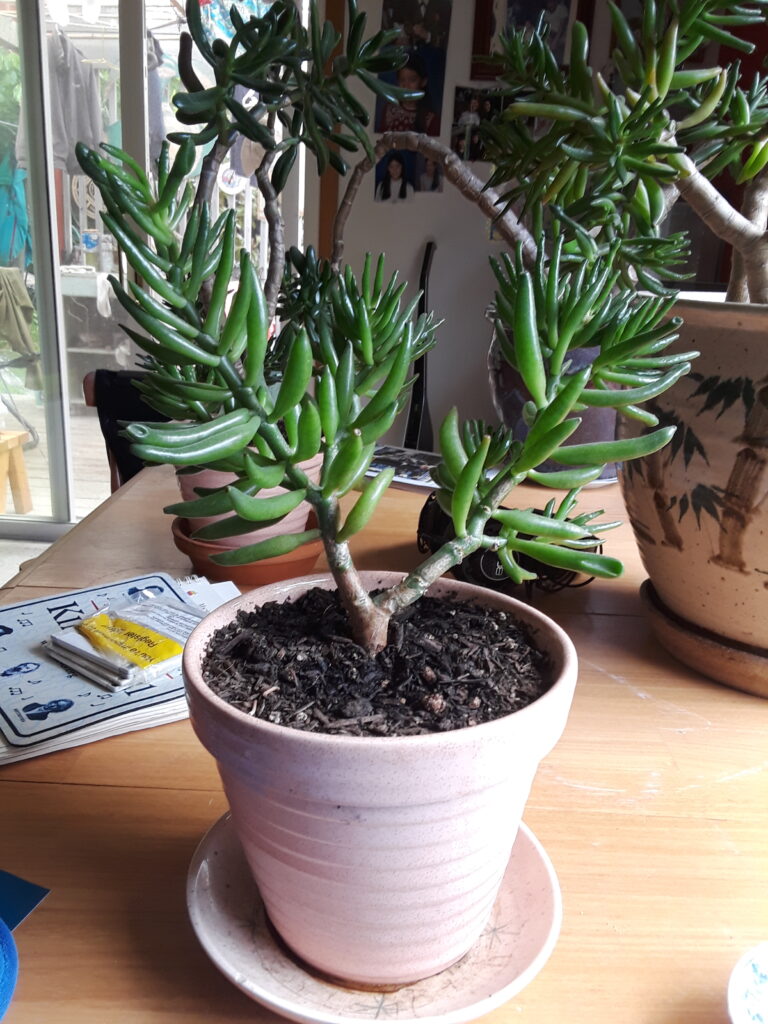
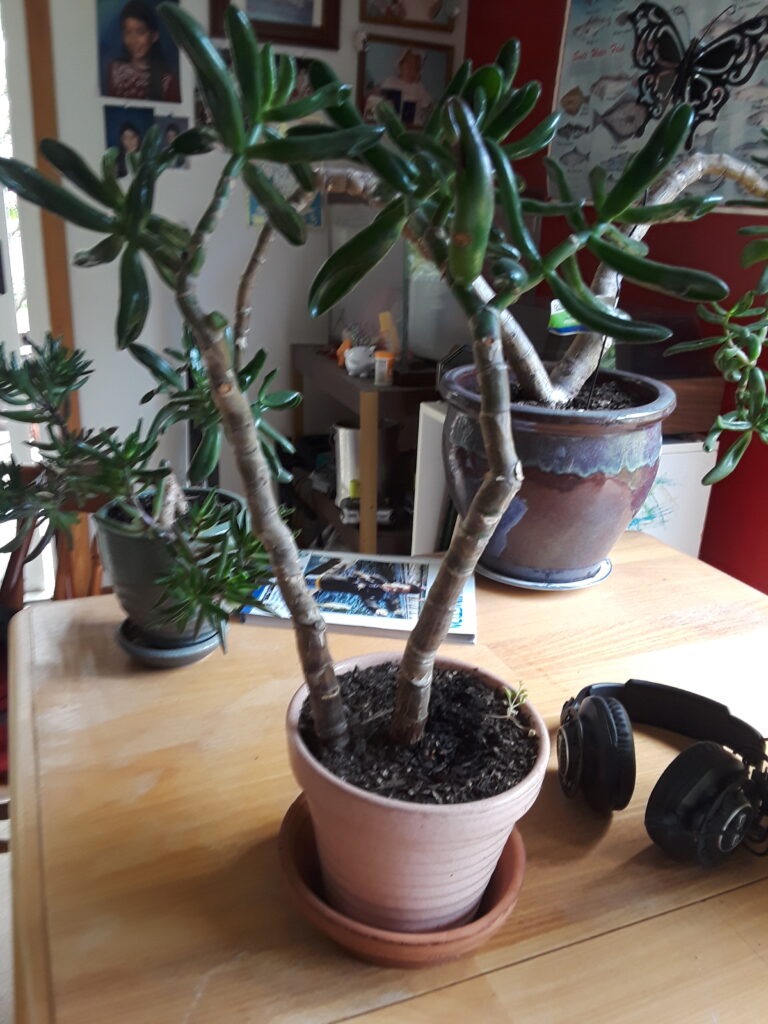

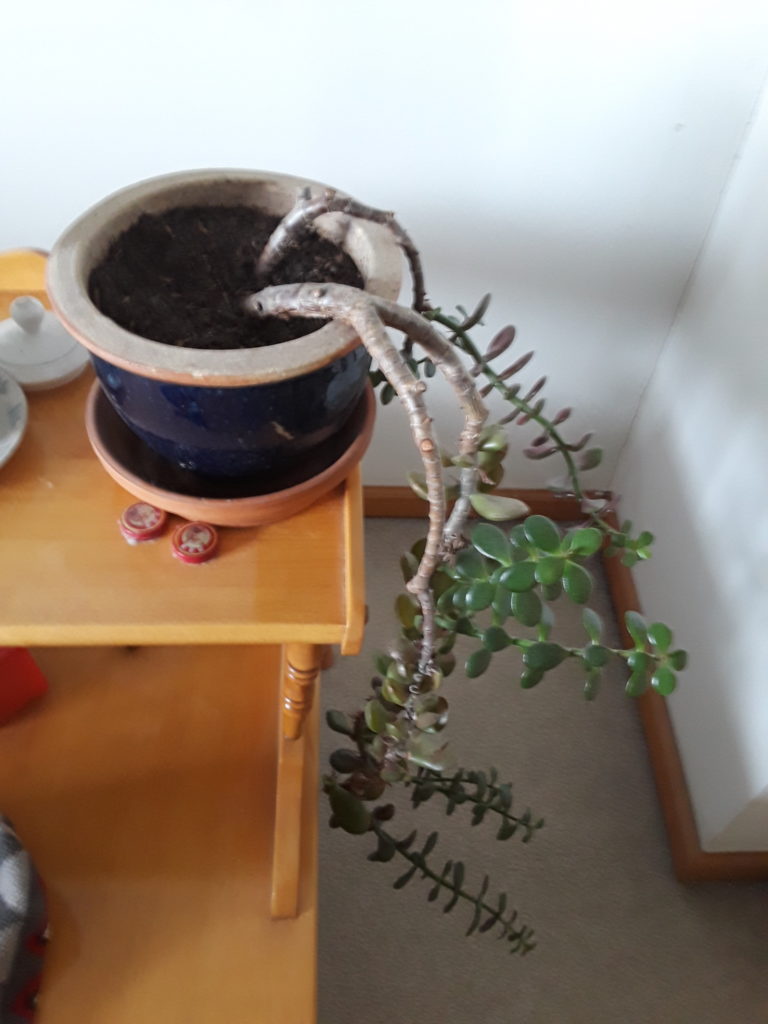
If you want to learn how to grow big jade plant, money plant,Yes-I do sell jade plants and if you are interested , please contact me.
I have many inquiries from many avid jade plant lovers on how I keep the temperature/humidity control so the jade plants are happy. Well, I use the “PELONIS Oil Filled Radiator Heater Luxurious Champagne Portable Space Heater with ,here the link:
If you want more info about this heater or any house ideas, I recommend you visit www.omnihomeideas.com
I will sell you different varieties of jade plants.
Scientific name: Crassula ovata
Crassula ovata or Jade plant, the Asians called it Lucky Plant aka “Money Tree” aka the Good Luck Tree, which is my Money Tree, I have sold so many jade plants and also get to know lots of jade plant lovers all over the world.
Yes-I do sell jade plants and if you are interested , please contact me.
This common Jade Plants can be seen in many places, like malls, restaurants, neighbor’s windows, offices, gardens in temperate climates etc. Jade Plant is a handsome plant/tree with round fleshy leaves that charms plant enthusiasts with it’s glossy bright green foliage and red tips!
I grow many types of Jade Plants, the big leaf, the climbing ones, the small leaves ,bonsai jade plants, etc etc
I even sleep and meditate under my huge 30+yrs old jade plant.
I just love to grow and have a big garden too. I grow so many different kind of veggies and fruits that I give away to my neighbors.
If you have any questions about growing, please contact me.
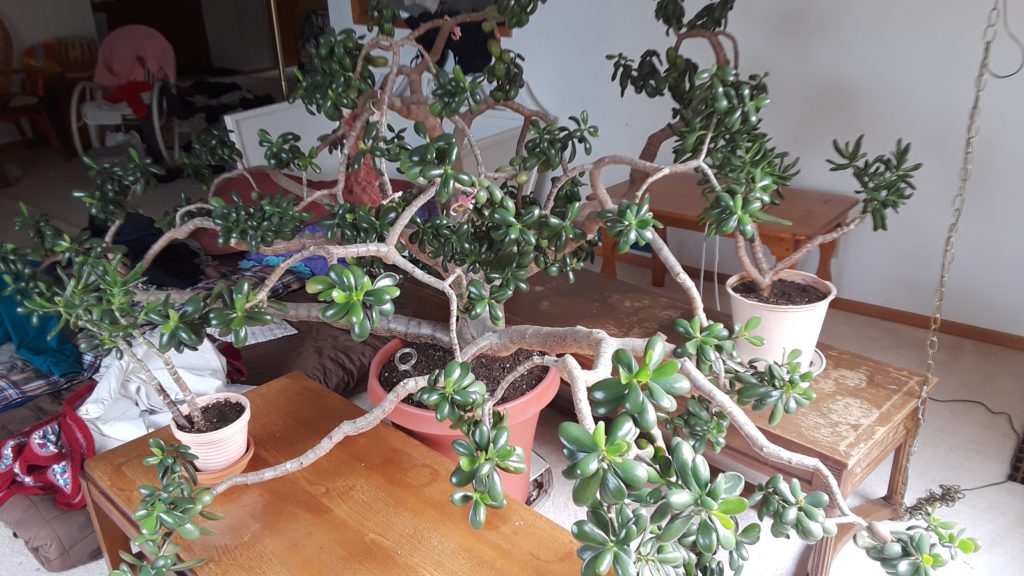
Jade Plant is appraised at $350kUSD
Seems like my jade plant is on Steroid. She keeps on growing.
I am 5’11″” tall and a big dude. You can see the the width of the jade is huge and it is tall.
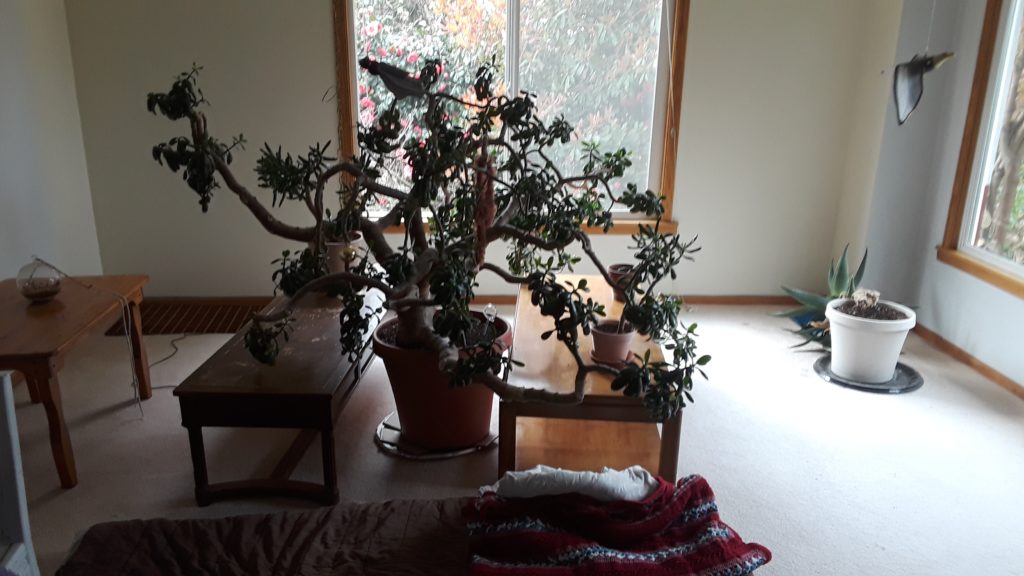
Location: Seattle, WA
Room temperature: 50-60F
Age:25+yrs old
Height: 5’ 10”
Width” 21’ 9”
Trunk Size: 17 “
Pot size:18 X 21
Leaf size: 3-5”
Care: Water once a week in Summer and once every 2 weeks in Winter. Use good clean fertilizer .
Lots of TLC….and lots of good loving talking.
Fish: 480 lbs (guess what fish is that ) – Location: Not Telling
**** My wildest dreams have come true–the biggest Jade Plant and caught the huge 480 lbs monster!! Working on one more dream to fill up my bucket list
Use it as my Christmas tree
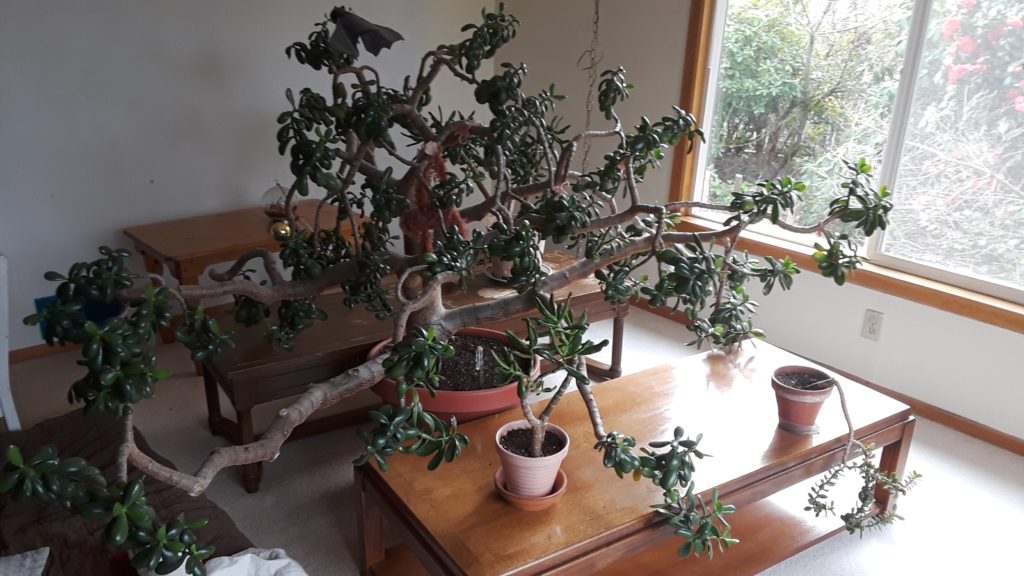

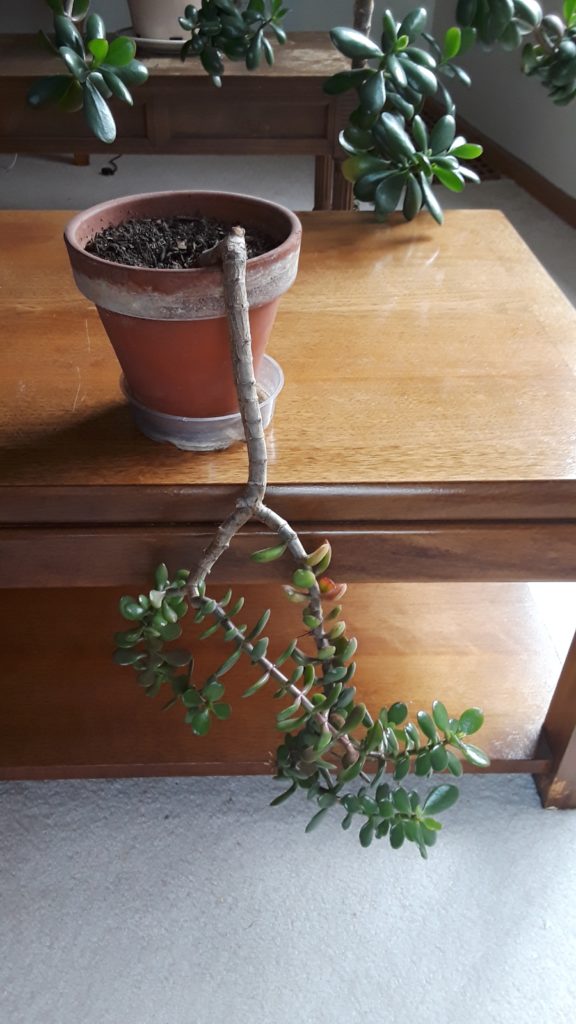

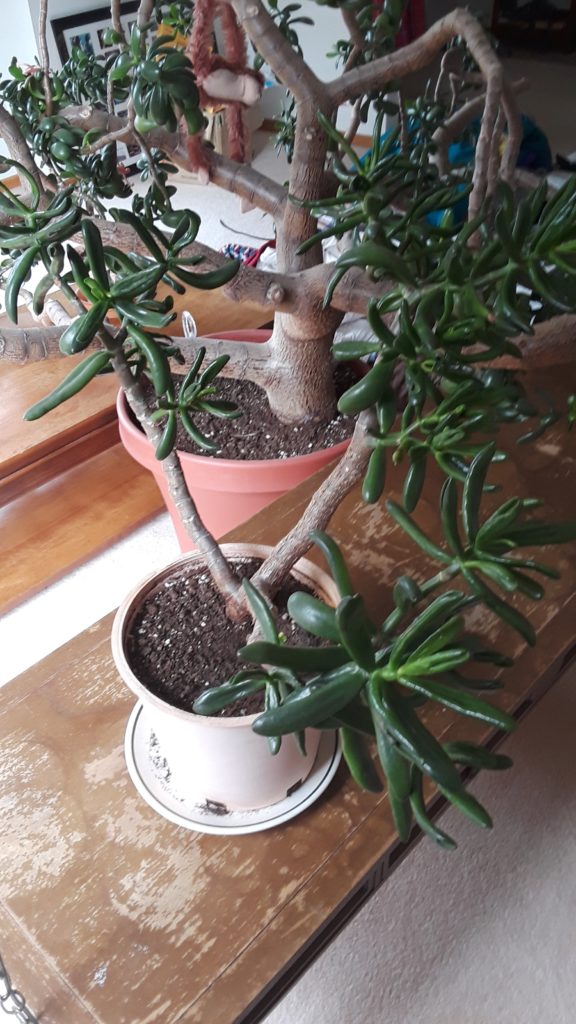
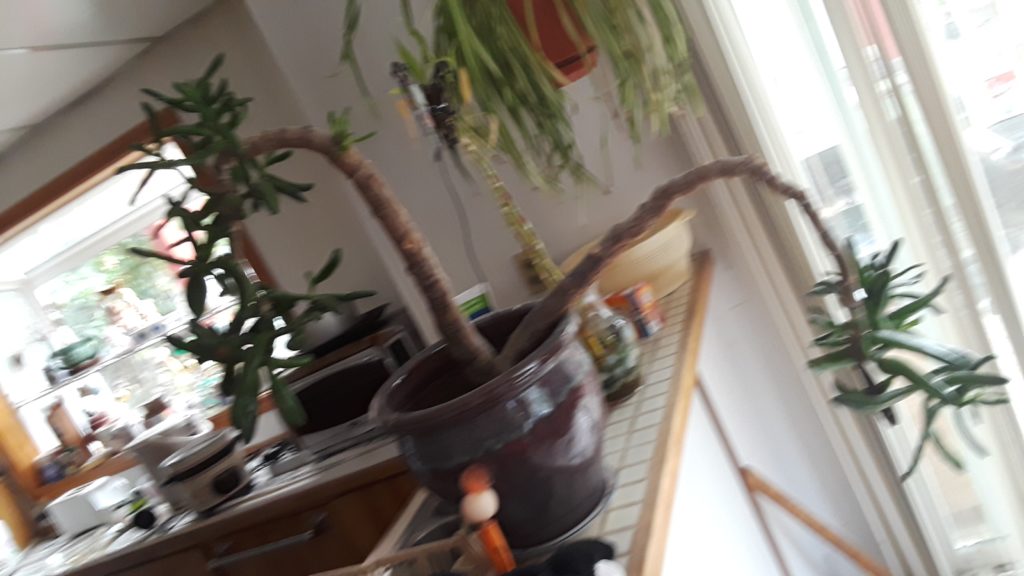
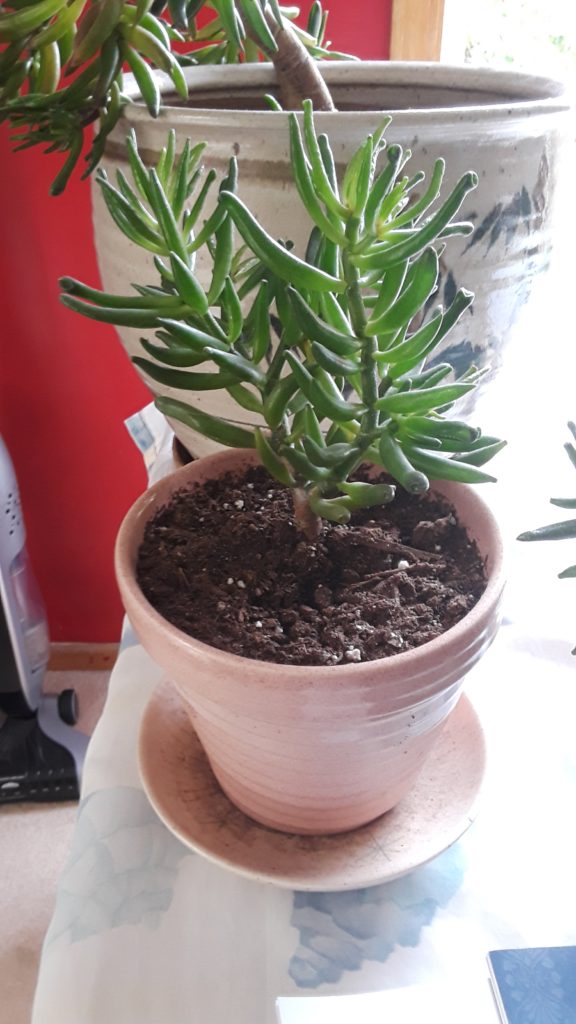
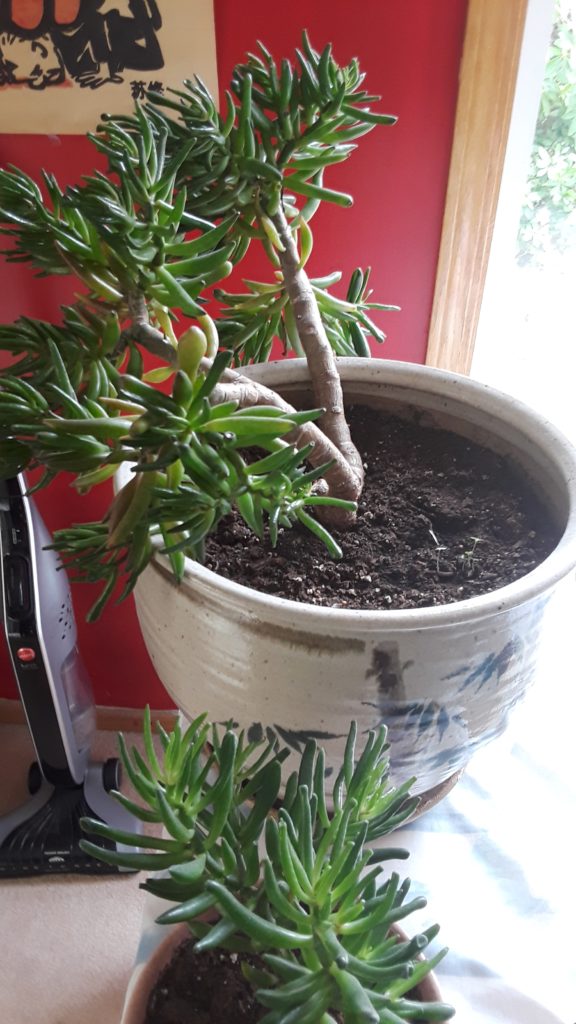
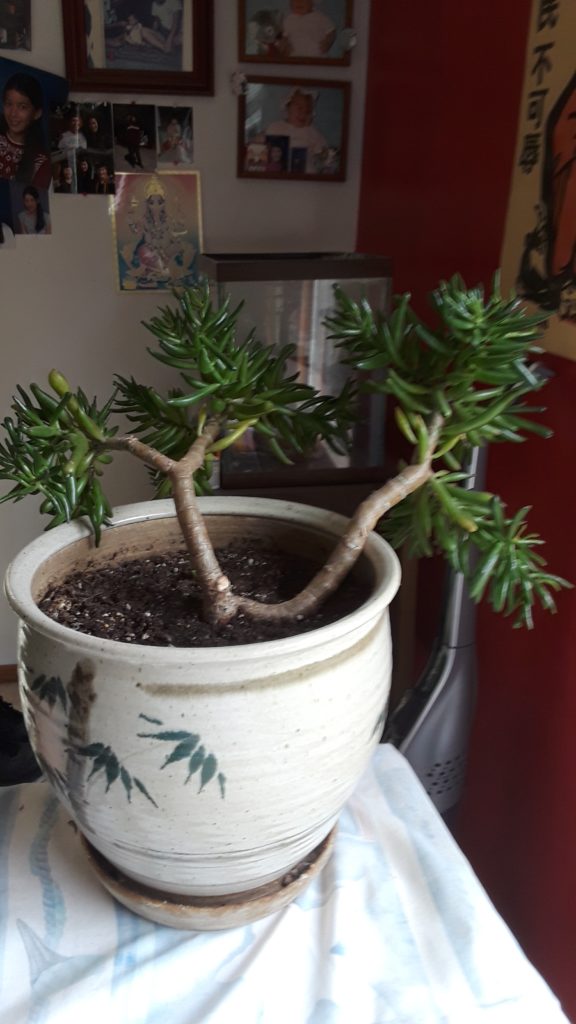
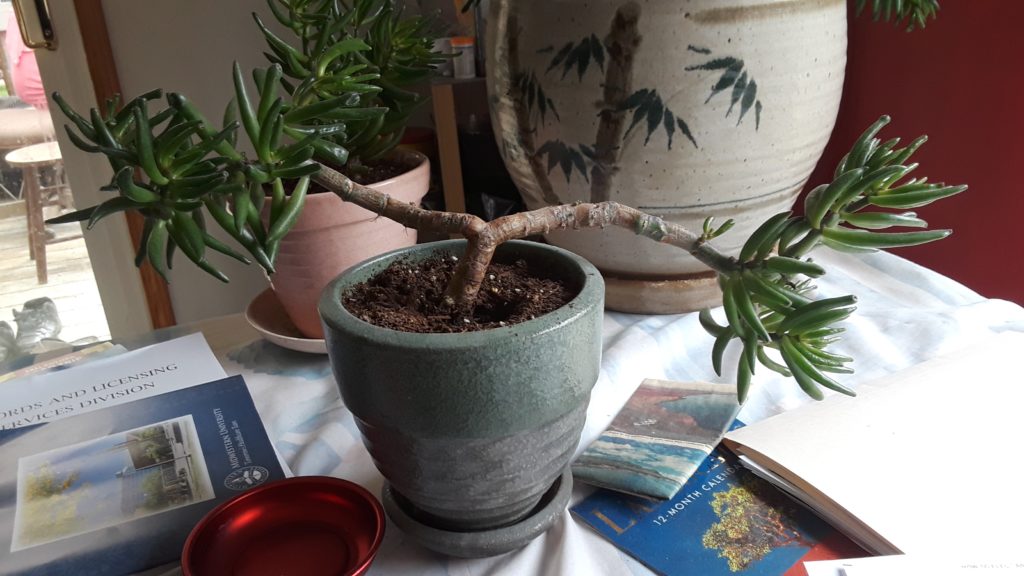
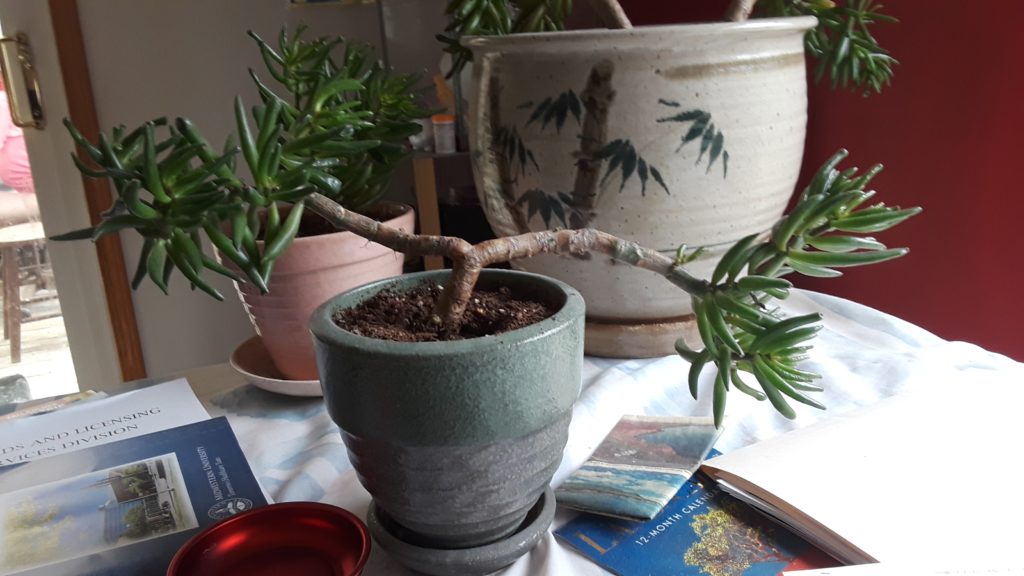
More Jade Plants Pictures…
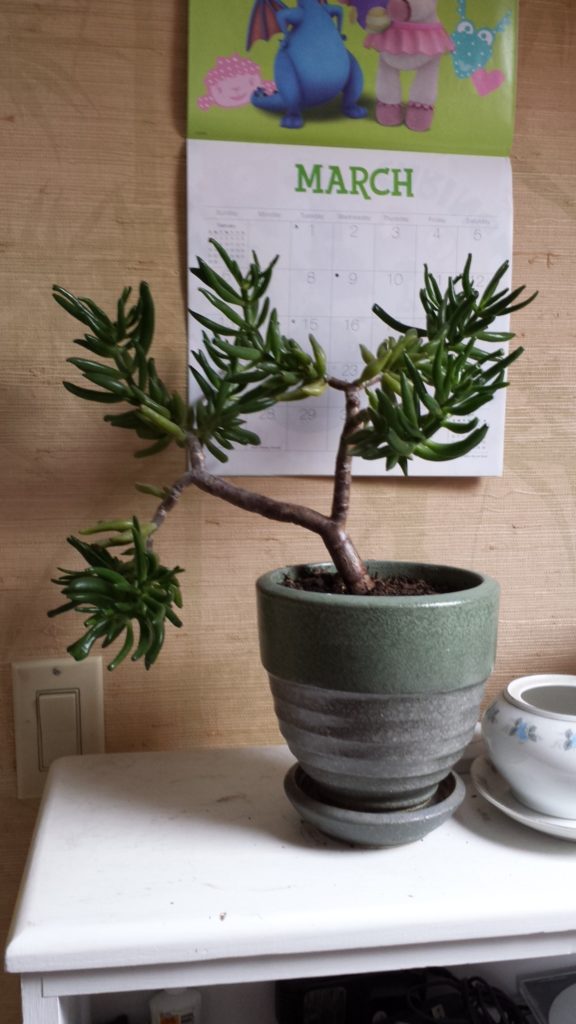

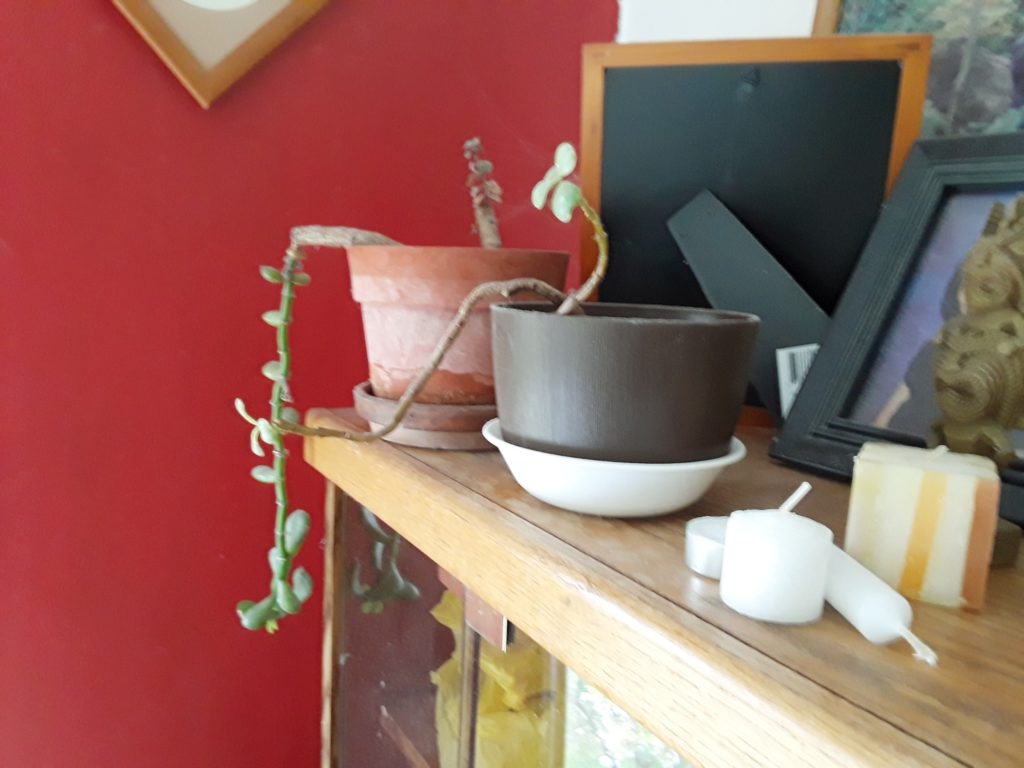
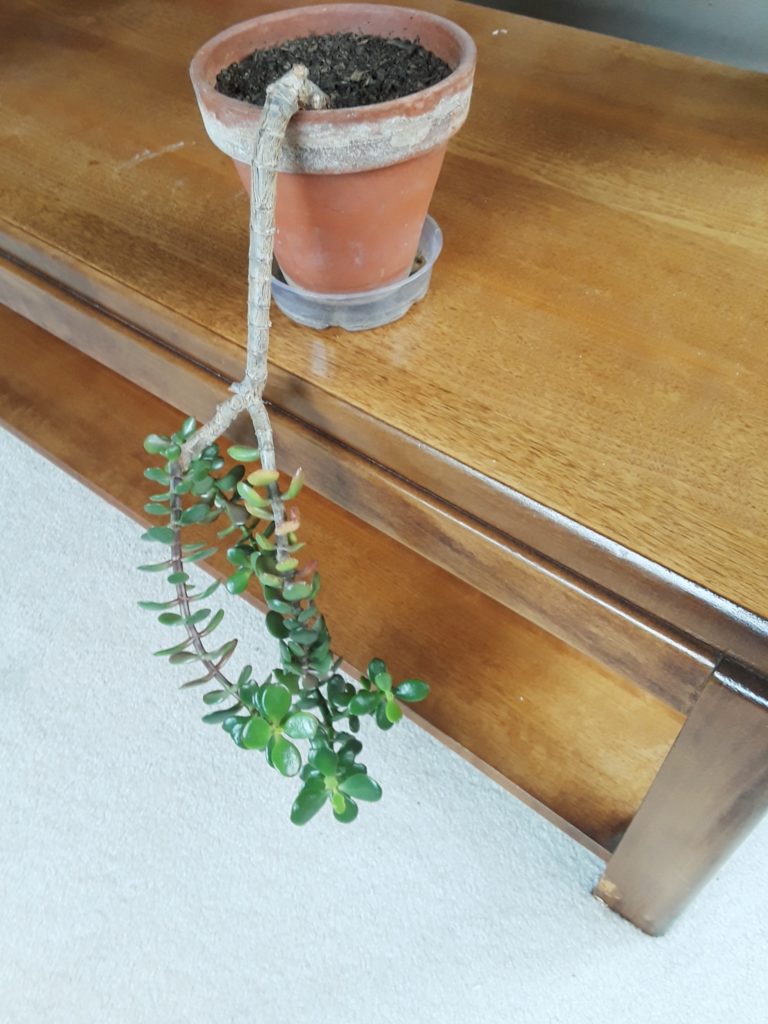


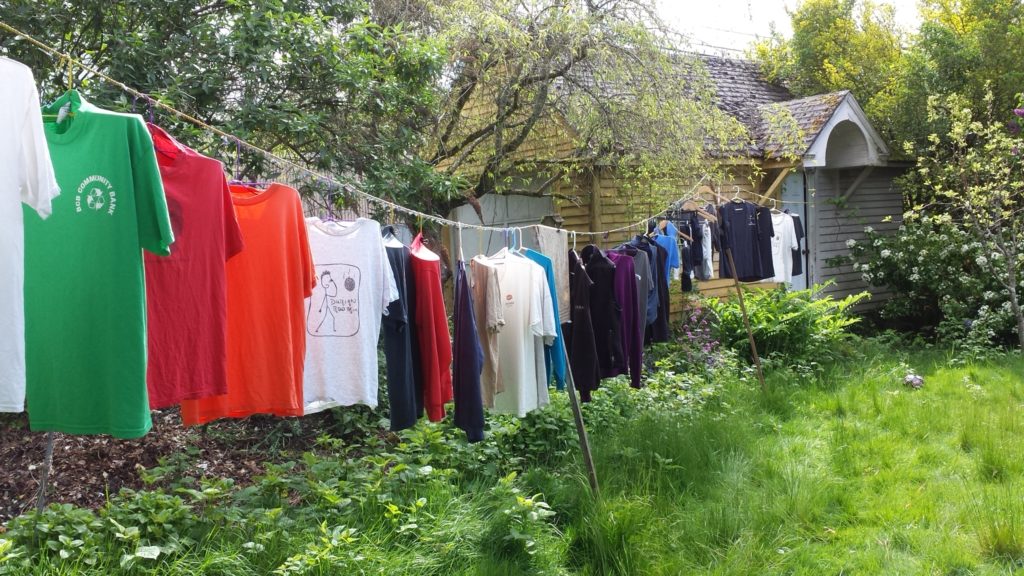
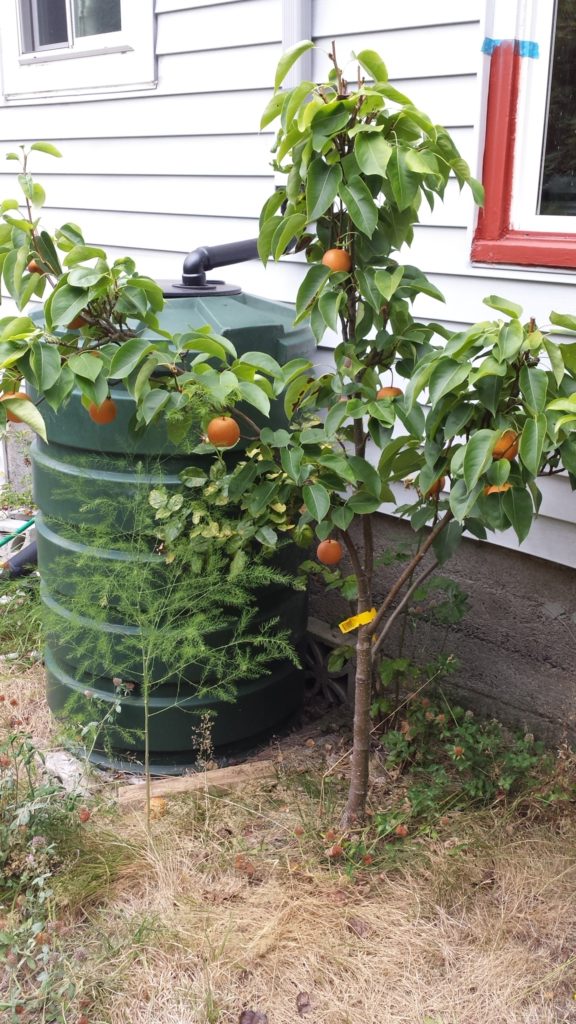


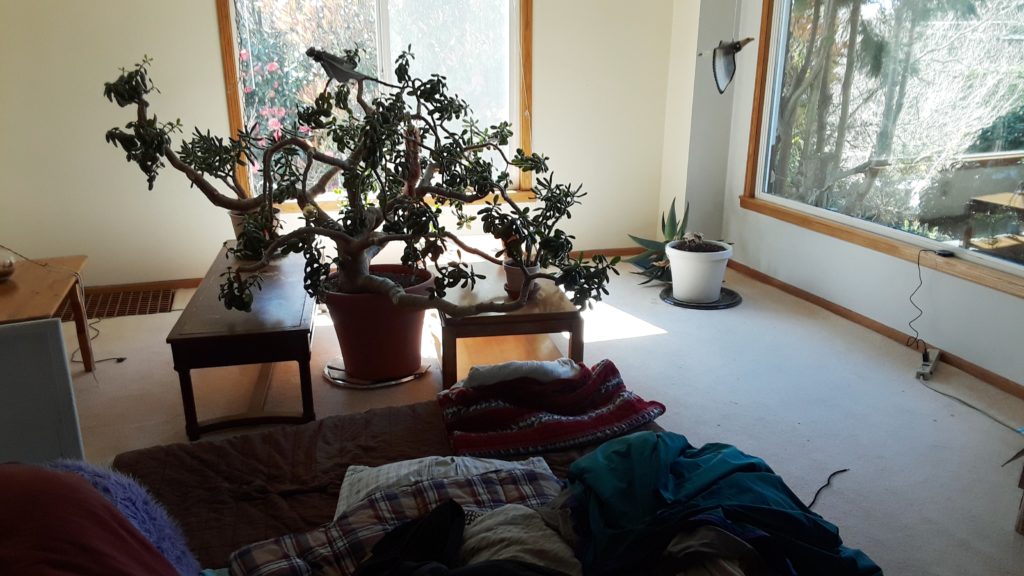
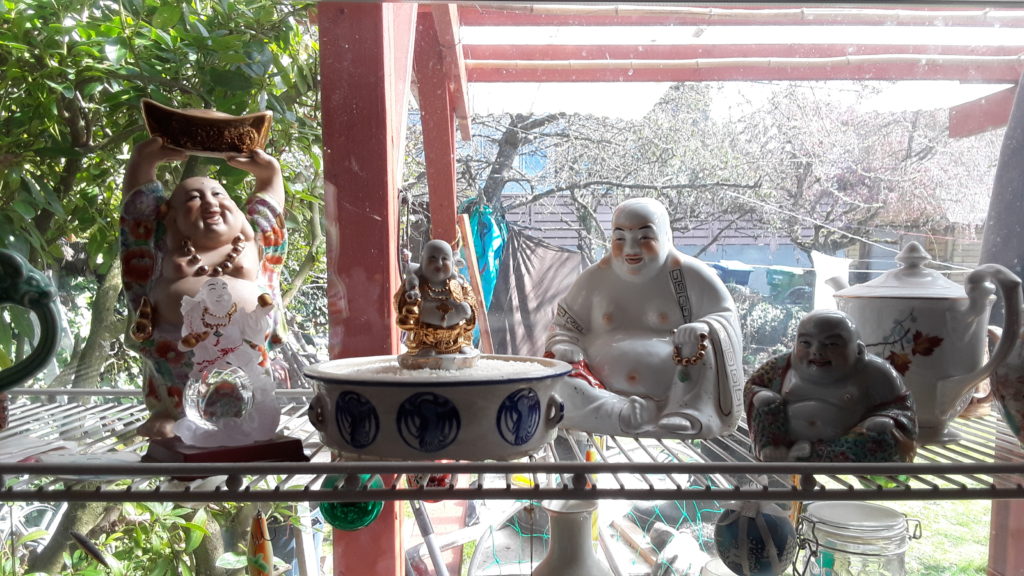
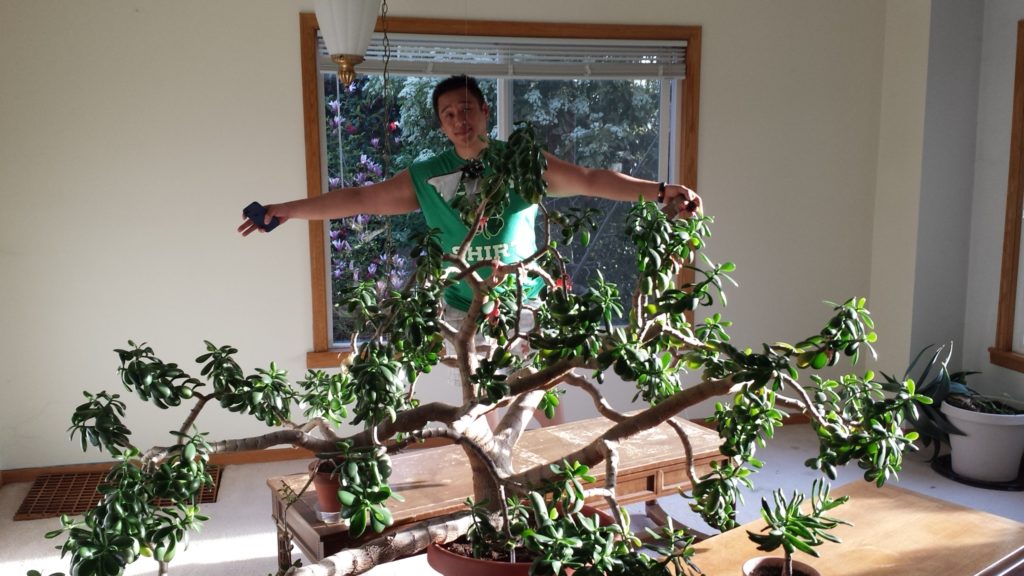

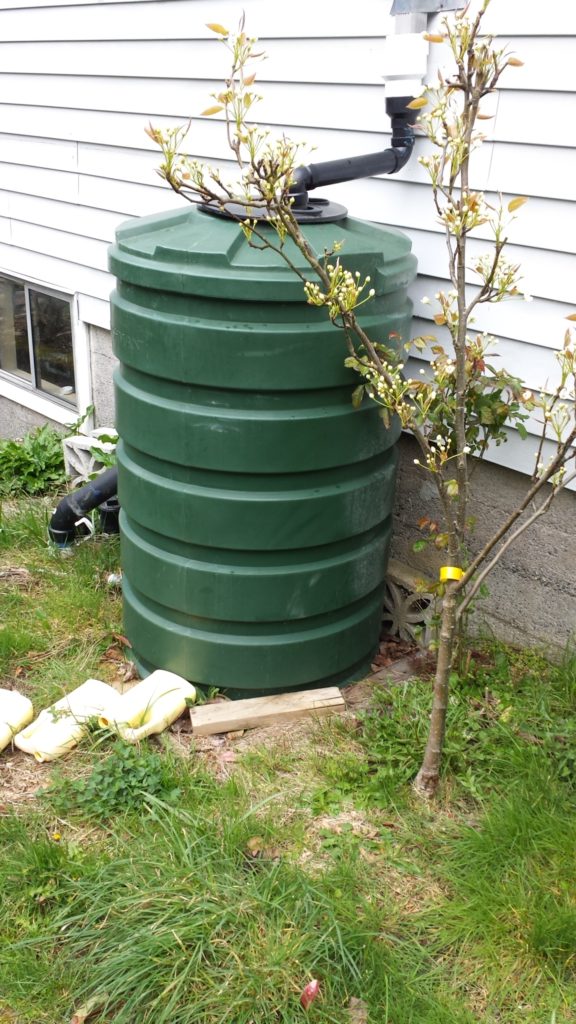

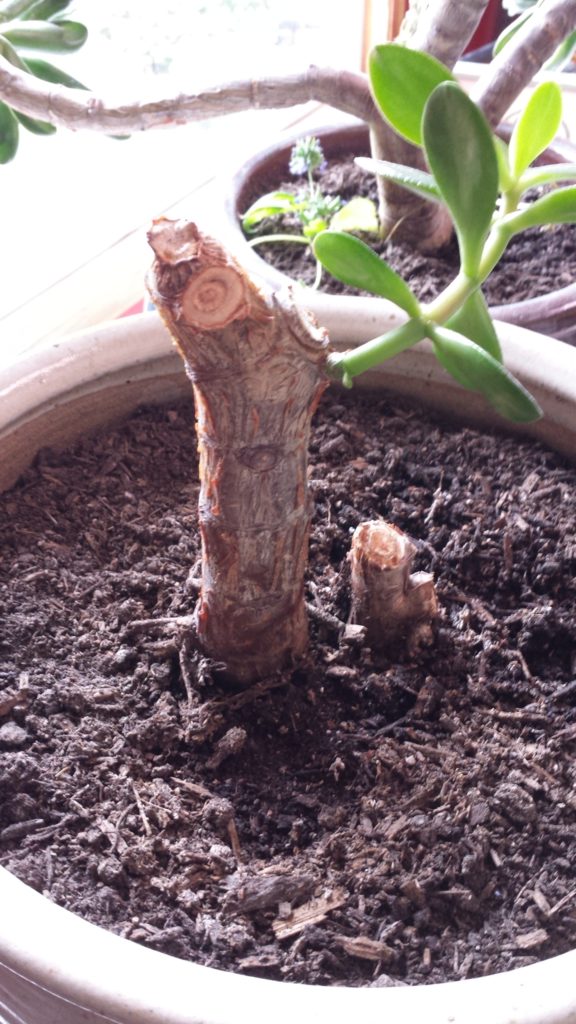

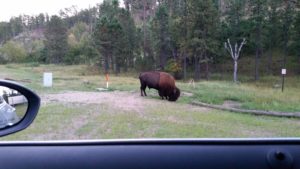


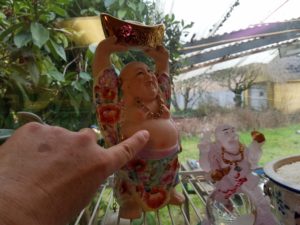


OLYMPUS DIGITAL CAMERA
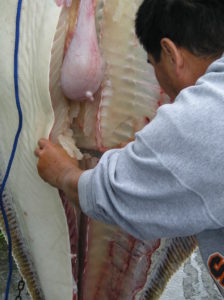
OLYMPUS DIGITAL CAMERA

OLYMPUS DIGITAL CAMERA
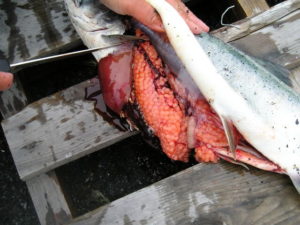
OLYMPUS DIGITAL CAMERA

OLYMPUS DIGITAL CAMERA
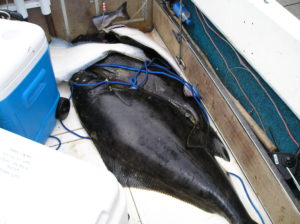
OLYMPUS DIGITAL CAMERA
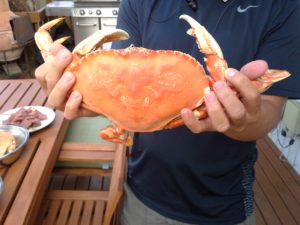

OLYMPUS DIGITAL CAMERA
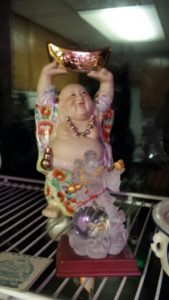

OLYMPUS DIGITAL CAMERA
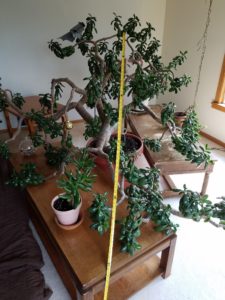
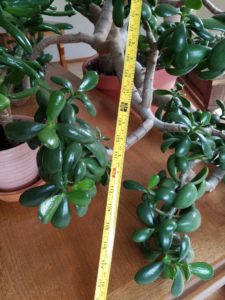
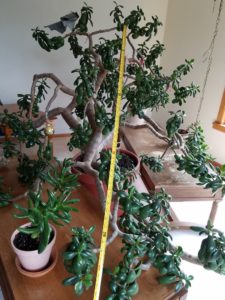
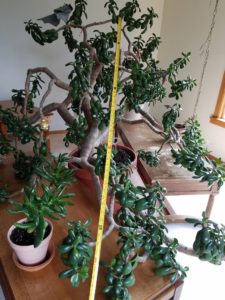

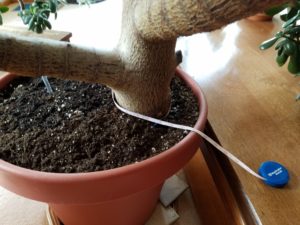
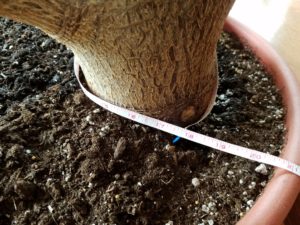
Location: Seattle, WA
Room temperature: 50-60F
Age:28+yrs old
Height: 6’ 03”
Width: 7″ 3″”
Trunk Size: 20″
Pot size:18 X 21
Leaf size: 3-5”
Care: Water once a week in Summer and once every 3 weeks in Winter. Use good clean fertilizer .





 Well folks, not only I grow jade plants but I grow “things” to eat in my garden. I am bless with a big garden. What I grow in the garden-I grow strawberry,blueberry, raspberry,apricot,apples, Asian pears, regular pear, peaches, plums,big cherry tree that produces bing, red and Rainer cherry, Japanese Persimmon, Nectarine,
Well folks, not only I grow jade plants but I grow “things” to eat in my garden. I am bless with a big garden. What I grow in the garden-I grow strawberry,blueberry, raspberry,apricot,apples, Asian pears, regular pear, peaches, plums,big cherry tree that produces bing, red and Rainer cherry, Japanese Persimmon, Nectarine,

Italian Prune, Fig, green beans, zucchini, cherry tomato,asparagus, sugar peas, kale, Chinese spinach aka chai-sim, Chinese Broccoli aka Kai-Lan, and…soon Marijuana. Did I miss anything? I grow anything that can grow.
Did you see the largest blueberry? it is huge
**Total cost spend per year to maintain a big garden:
Seeds: $10-I buy them on sale
Soil: Free- as I compose all the dead leaves and trimming.
Fertilizer: only 5 bags of steer manure but most of them are organic.
Water: FREE-FREE-FREE–YES YOU HEAR ME. I have 10- 55 gal rain barrels and have never used public water during summer.
Note: There is so much veggie from my garden that I give them to my neighbors and some to the Food Bank.
I love to grow and I love to grow FOOD instead of grass.
Dry clothes-using the power of the SUN.
How to save water and Energy
This is how I dry all my clothes, save lots of money and it only takes 2 days to dry in the 50s and only one day it is 60s and above.
Oh yeaaaaaaaa save lots of money and best of all -going green. When it is dry, all you have to do is touch dry in the dryer. The clothes last longer too.
Using the power of the SUN- FREE SUN
Yea-lots of people are freaking embarrass to do this hanging clothes because they might offend their neighbors but who gives a F… I tell my neighbors that I save lots of money and that all I care. What there to be embarrass about??? in most of Asian countries like in Hong Kong, India, Malaysia, Thailand, you can see those people hanging clothes outside.
Yea- the best part is you get to see your neighbor’s clothes and I love it when I see cute panties …..Whopeeeeeee
So my dear what is there to be shy about??
In America, it is such a BS- they say to go green and save energy and blah blah blah– by changing the light bulbs, compost the food and driving electric cars —— all these are pretty freaking small stuffs- but it all adds up. The BIGGEST ENERGY SAVE IS DRY YOUR FREAKING CLOTHES OUTSIDE–FREE SUN-
AND use rain barrels. Yes I have lots of rain barrels too.
Save lots of water and energy!!! BEST OF ALL SAVE LOTS OF MONEY!!!